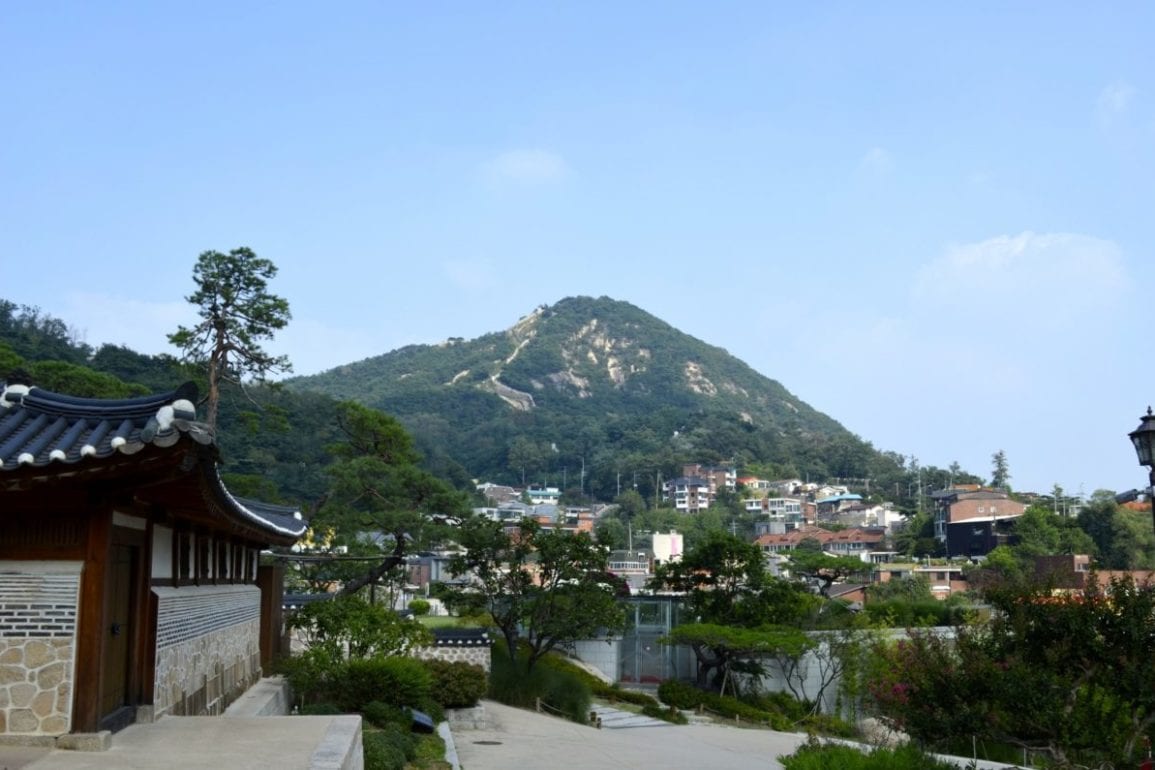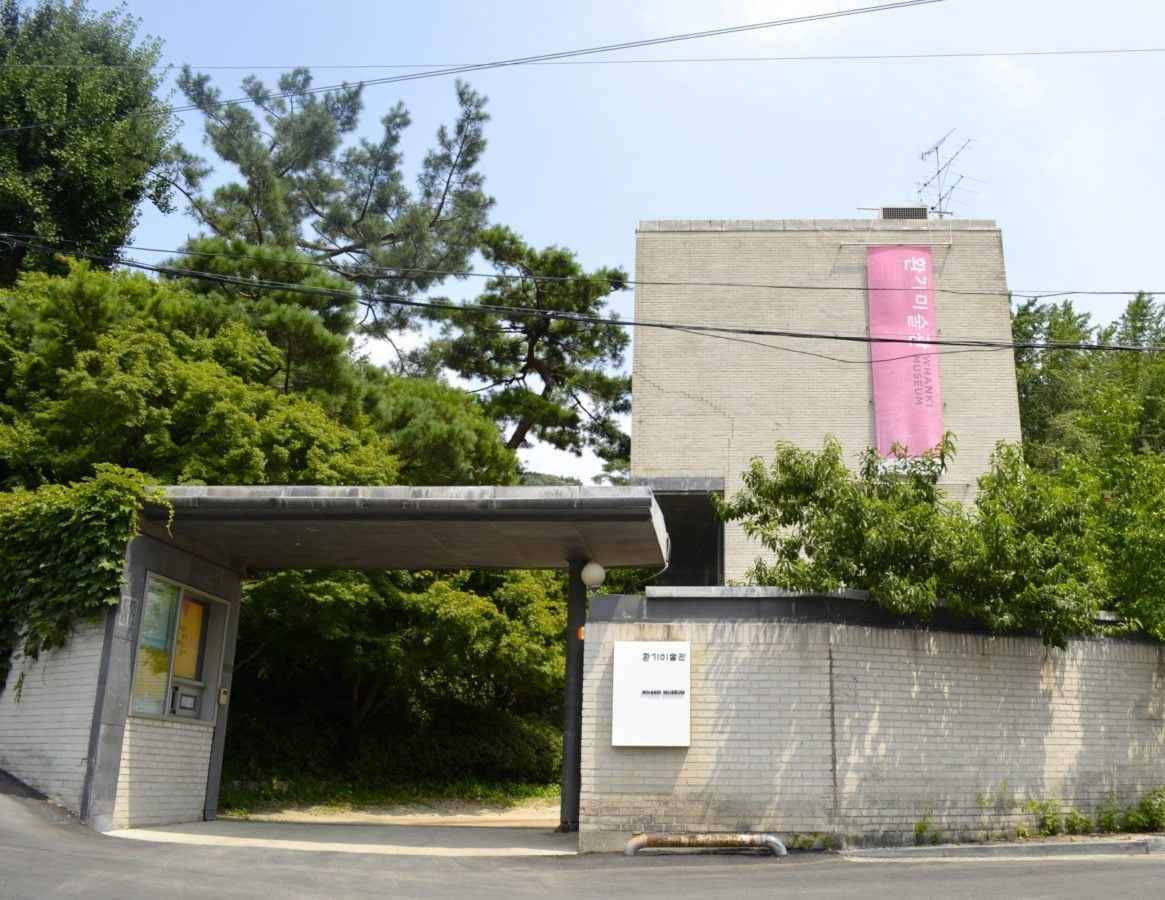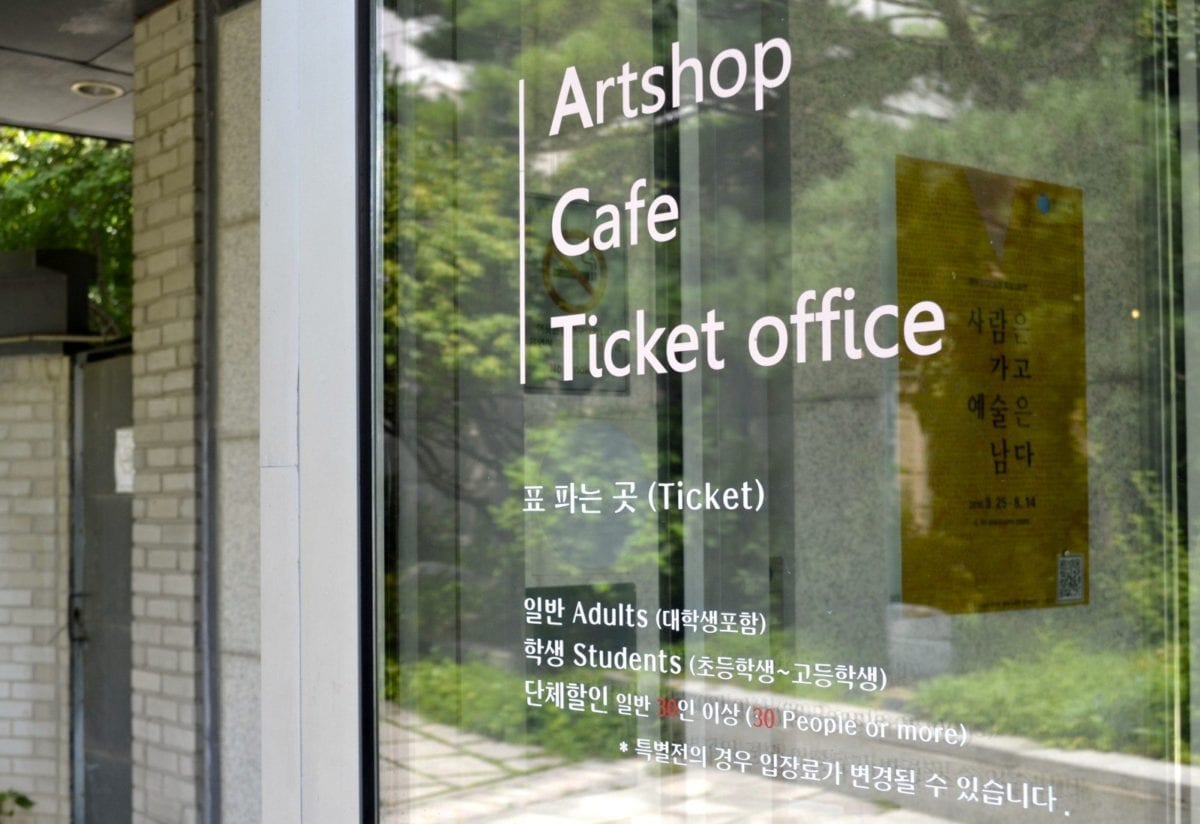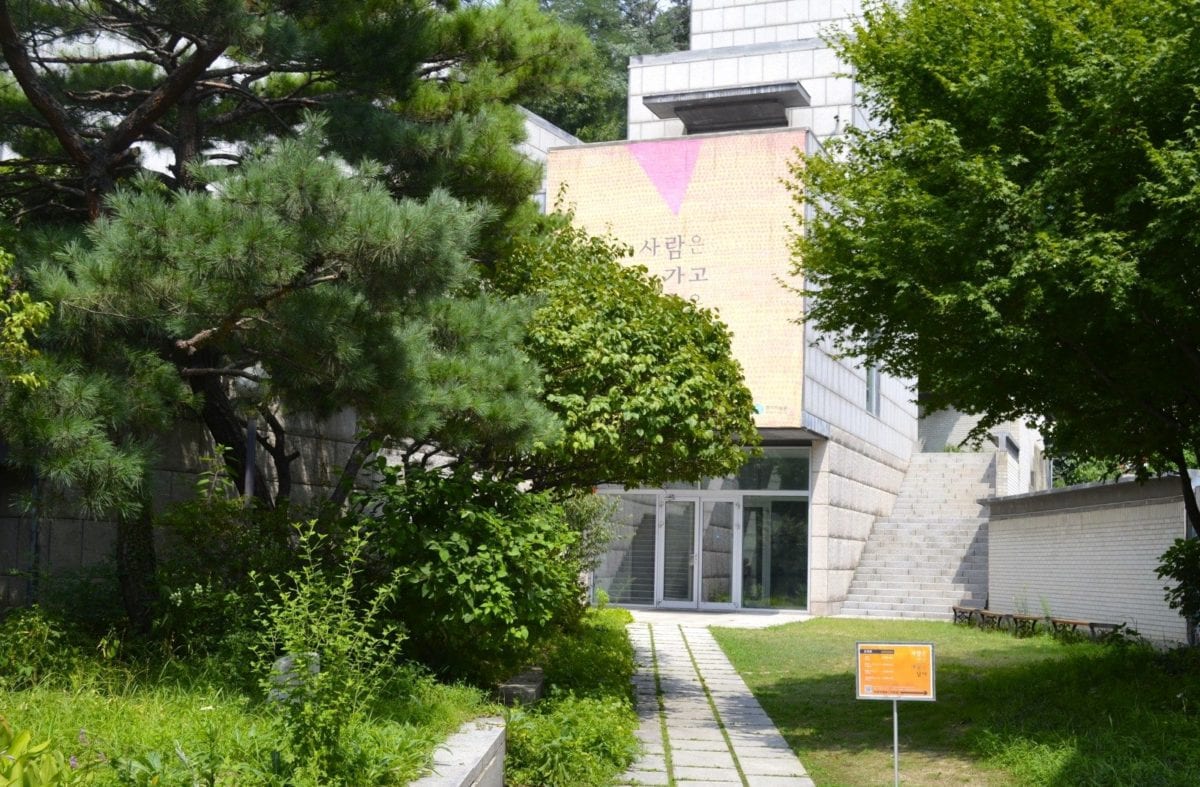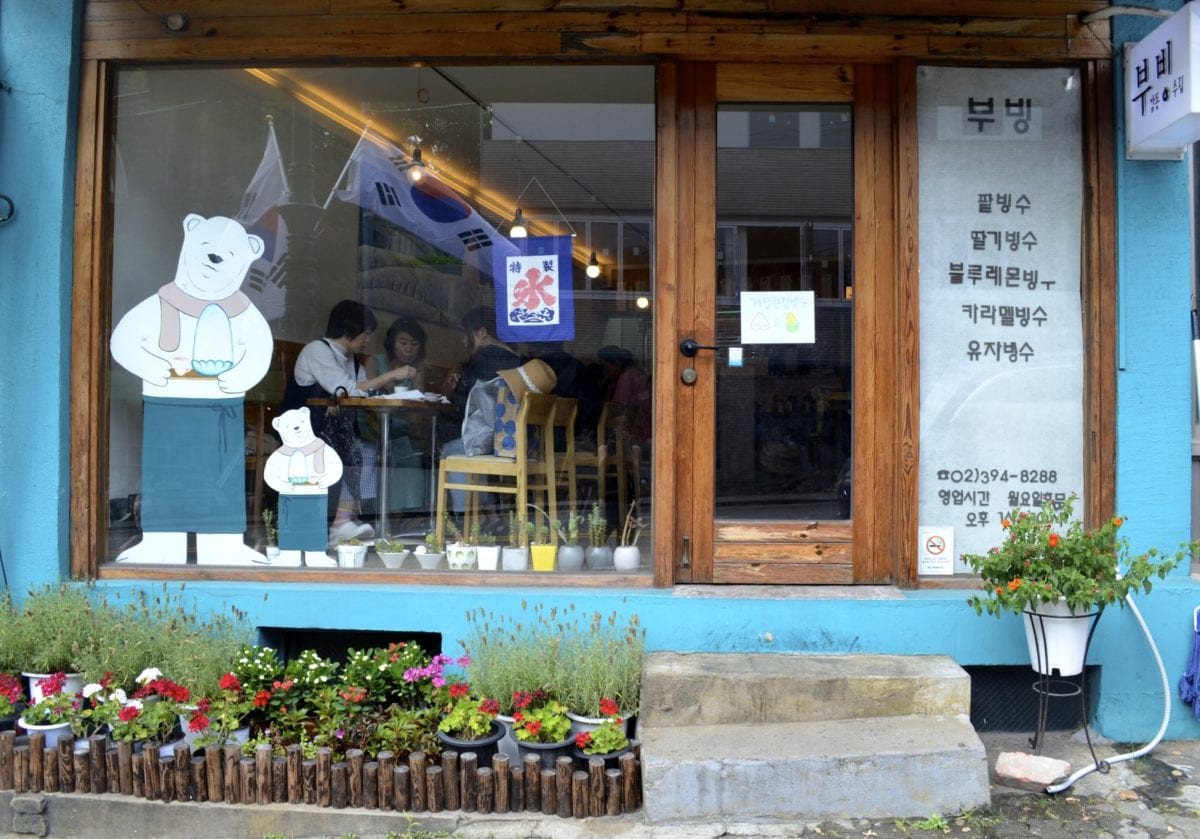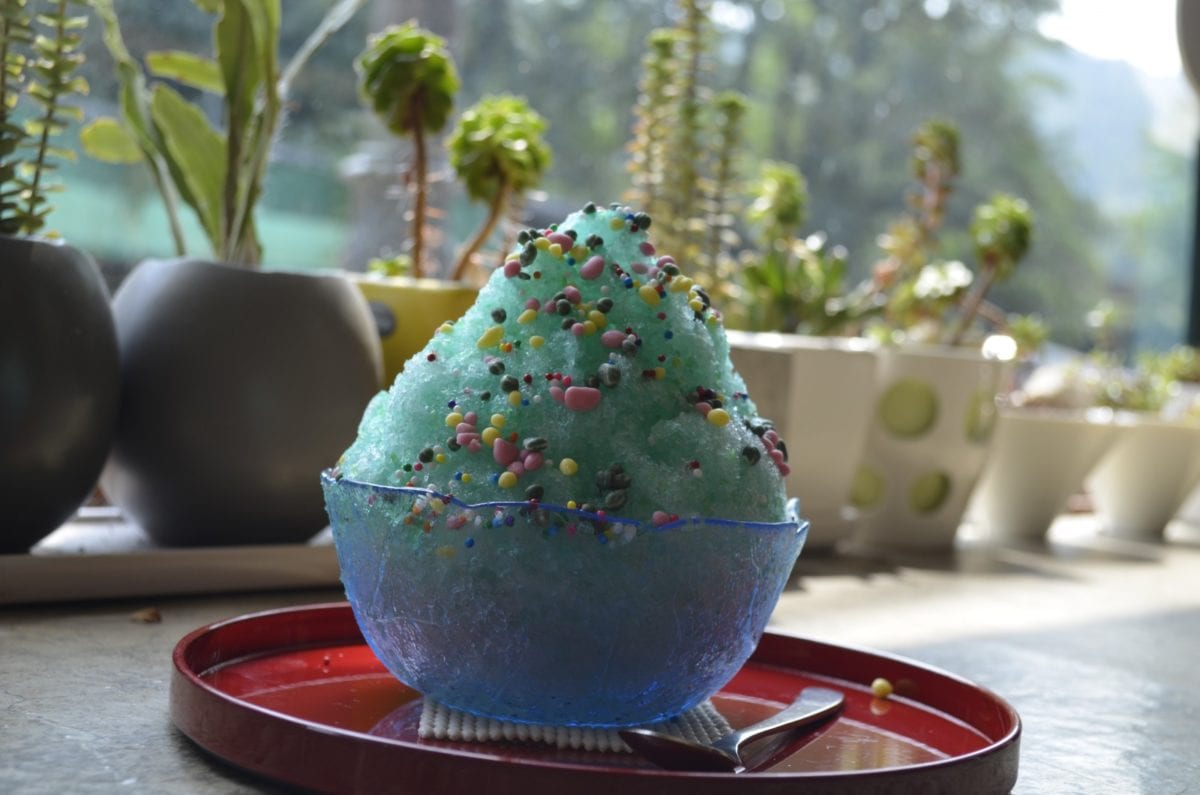Arriving on the streets of Buam-dong, one forgets that they’re in the sprawling metropolis of Seoul. There are no Starbucks or Paris Baguettes to be found here, no cosmetics hawkers or deliverymen jostling you on the streets.
Just a peaceful quiet area with a nice view of the mountains, and charming spaces occupied by artists of all kinds. It is a beautiful respite from Seoul with all the art but none of the gritty urbanity of Hongdae, overloaded tour buses of Insadong, or pretentious airs of Samcheongdong.
Here, you’ll find many independent art galleries, cute shops, great museums, and perhaps some of the best coffee and chicken you’ll have in your life.
Getting There
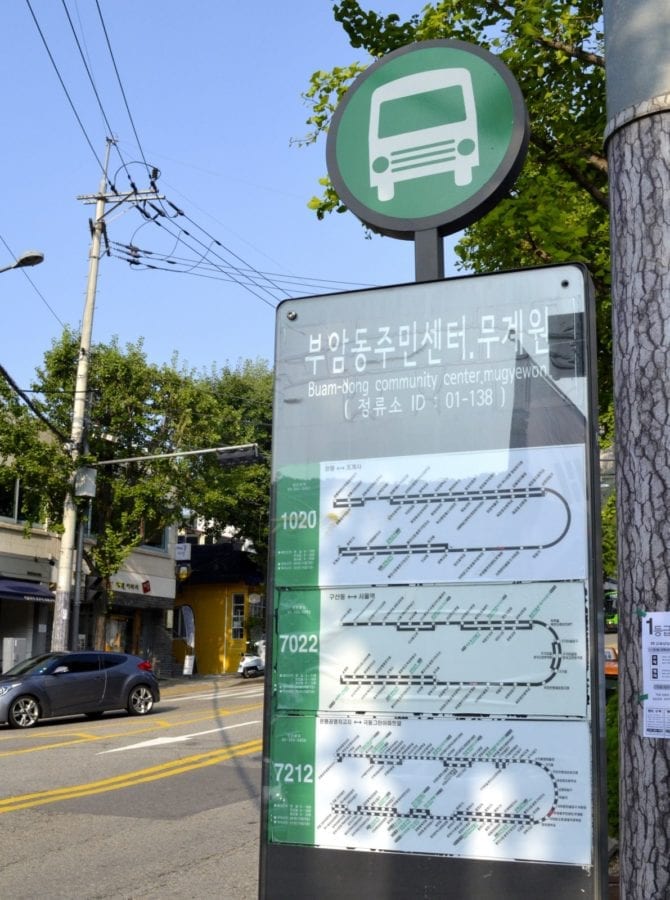
In terms of public transportation, this secluded mountain neighborhood is accessible only by bus.
The Literary Museum stop will drop you at the entryway to Buamdong, where you can see Jahamun Gate and the YoonDongJung collection, and continue 100m up the hill to the main road.
The Buamdong Community Center Stop will have you on the main strip, featuring one stop-light and a three-way intersection. If you’re starting your journey off hungry, this is a better location to get off.
Buses
7022 (Seoul station, Gyeongbukgung Plaza, Lotte World Plaza-Myeongdong)
1020 (Gyeongbukgung), 7212 (Yaksu station, Jongno 3-ga station).
7212 (Yaksu station, Jongno 3-ga station).
For those coming by car, there is ample parking up the hill, around the neighborhood, and a few spots at the Whanki Museum and Seoul Museum.
*Note: Many of the small businesses and galleries are closed Mondays. We recommend coming here on a weekday around 11:00 am-6:00 pm when all facilities are open and there is no cafe crowd.
Must-See Attractions at Buam-dong
Seoul Museum | 서울특별시 종로구 부암동 201
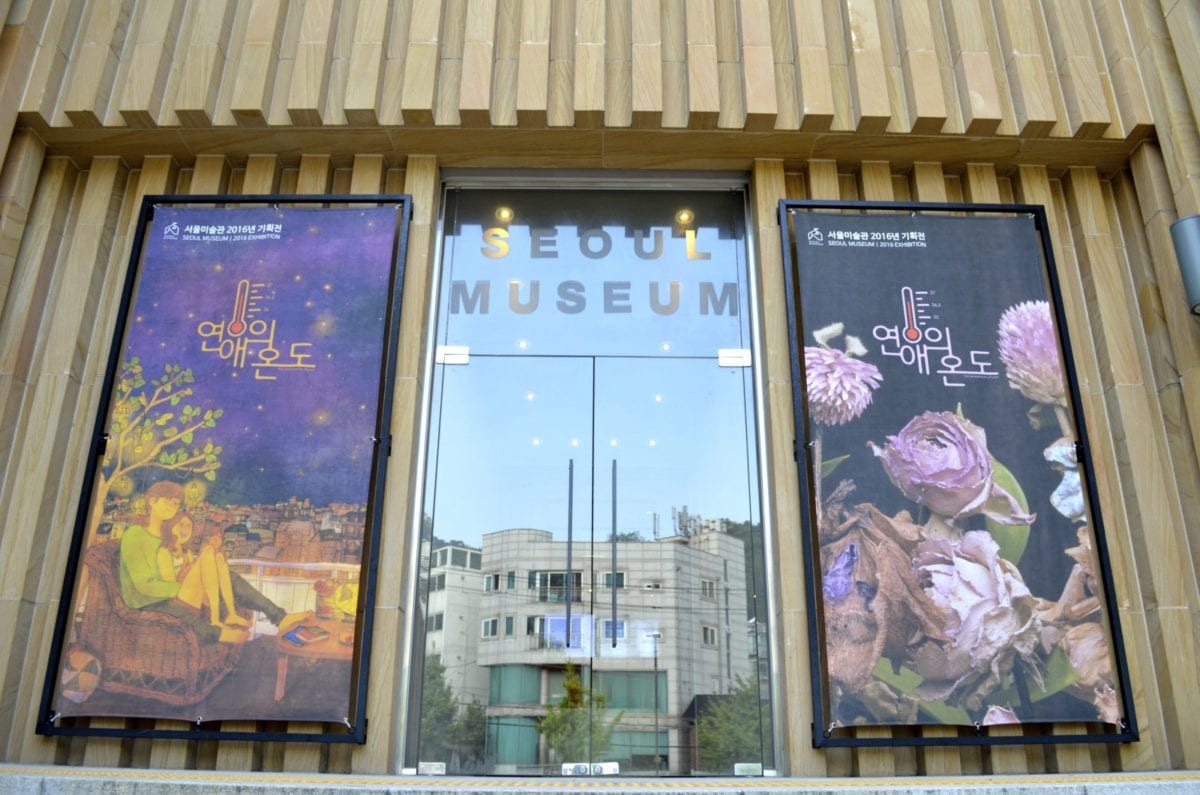
Easily the most versatile museum in Seoul, the Seoul museum is home to three floors of temporary and permanent modern and classical art by Korean and foreign artists. The top floor gives access to the Museum’s shop as well as Seokpajeong, a stately old hanok that was once a royal villa.
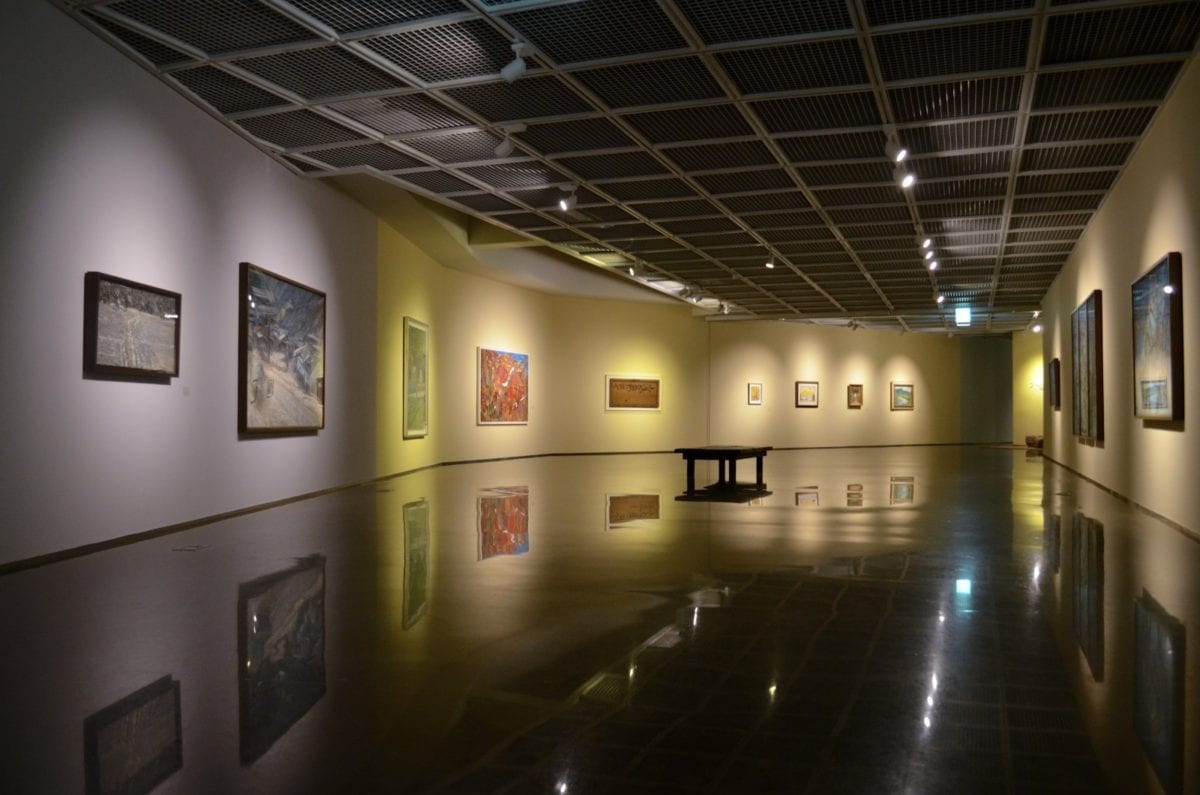
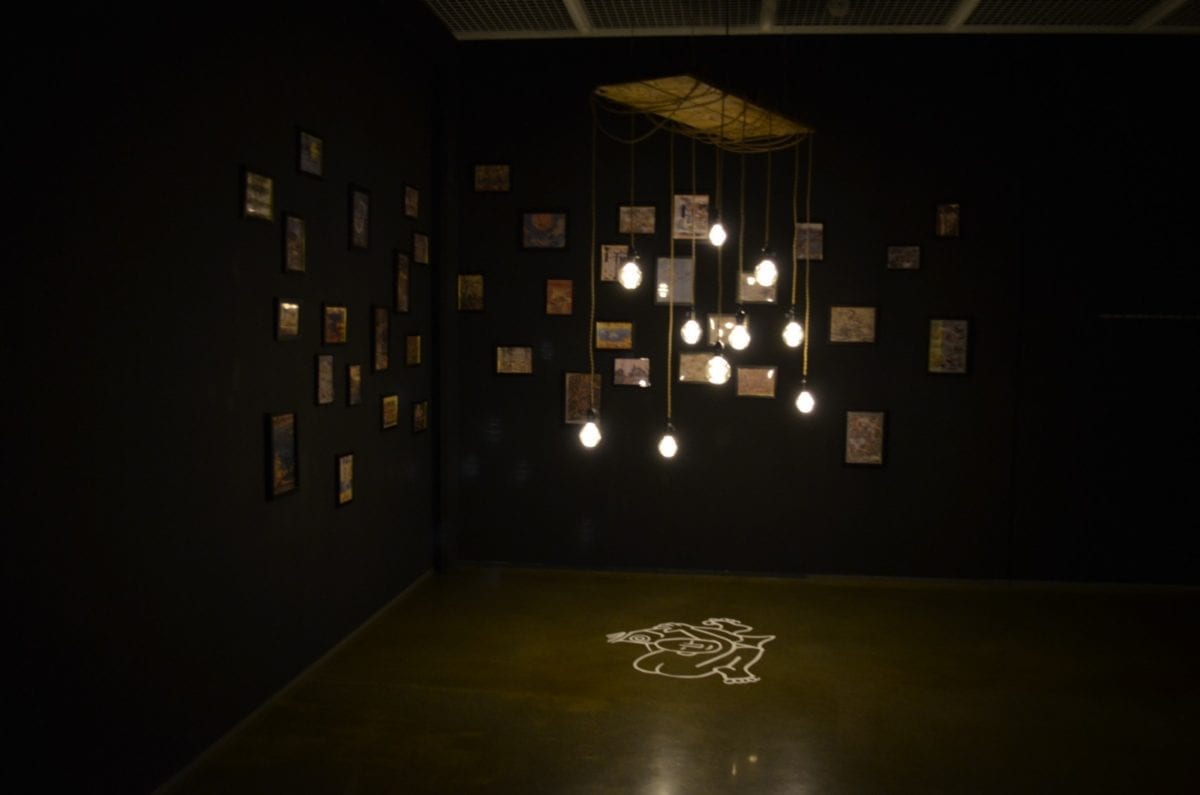 During my visit, the post-modern exhibit was entitled “The Temperature of Love”, which explains the very high density of couples in the hall!
During my visit, the post-modern exhibit was entitled “The Temperature of Love”, which explains the very high density of couples in the hall!
Exhibition halls are very spacious with careful attention to balance and proportion of the exhibited works.
Despite being a popular stop along the Korean tour route, museum guides allow you to slowly view and savor the art instead of hurrying you along after photographs in bali bali fashion.
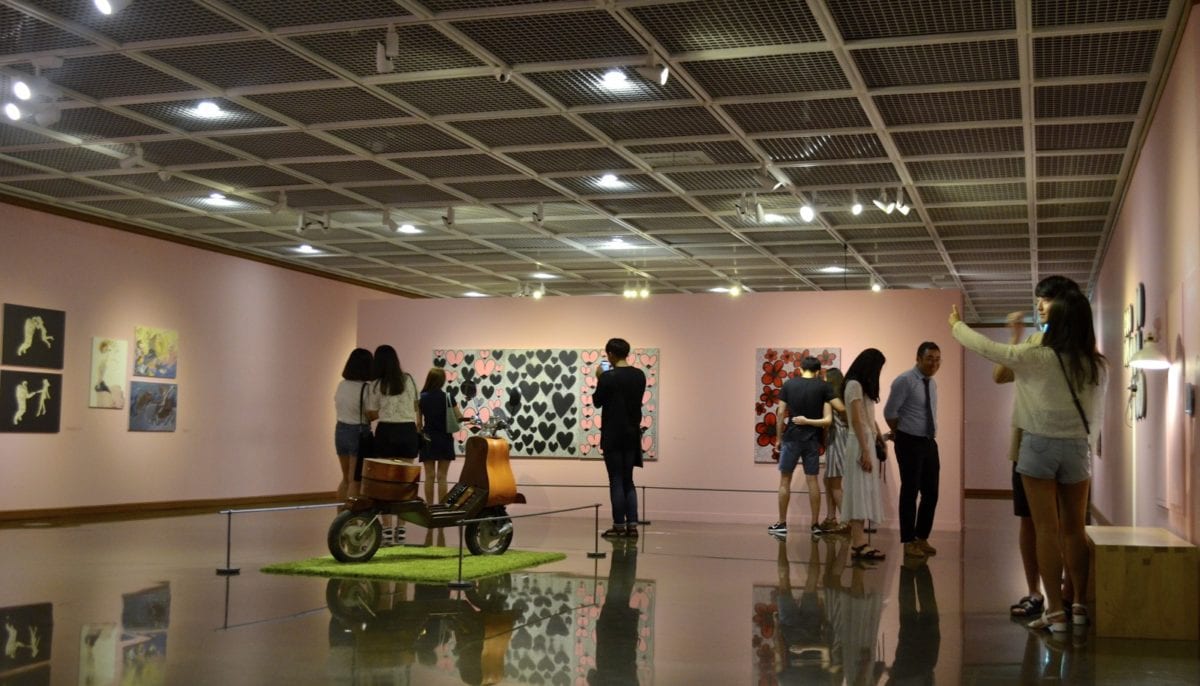
While the exhibition pamphlets are not generally available in English, audio guides are available upon request.
Adult 9,000, College Student 7,000W, Student 5,000W, Child 3,000W.
Phone: 02-395-0100
Seokpajeong (석파정) | 3충, 서울 미슬과
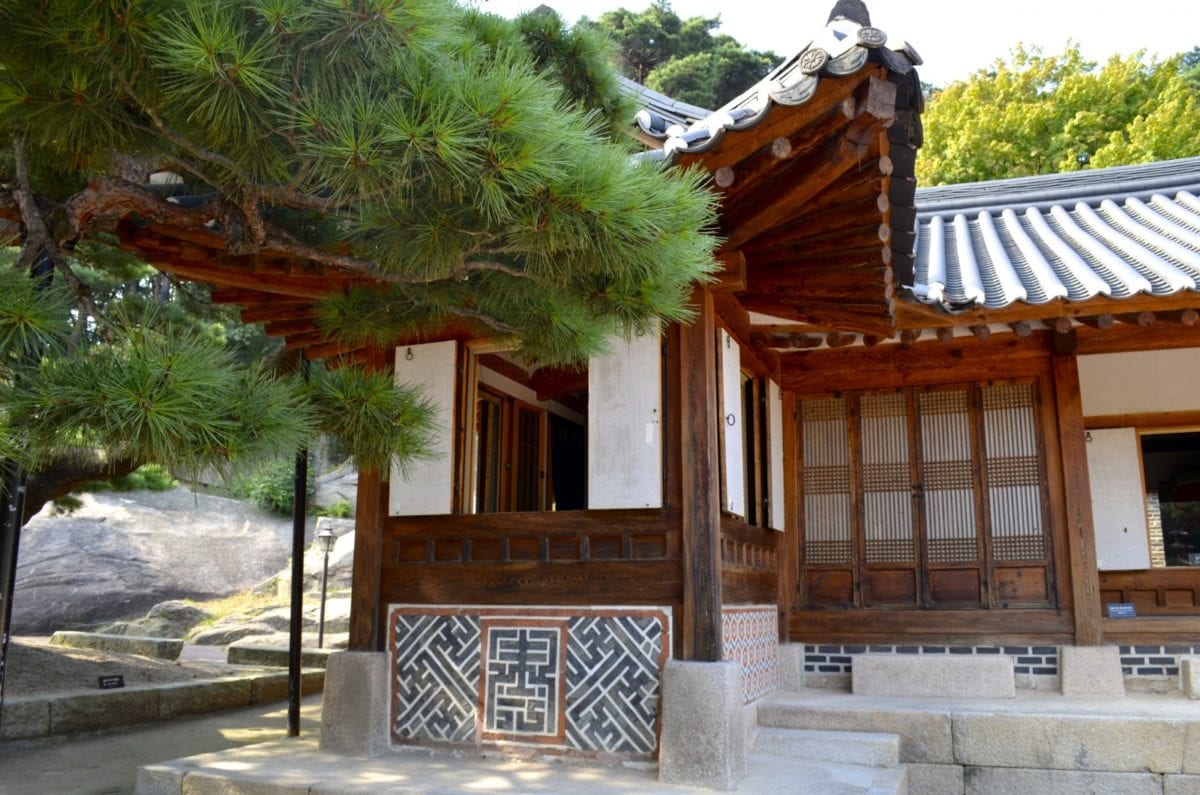

A former royal villa, Seokpajeong is a majestic complex of gardens, natural rock faces, and traditional quarters that were used by magistrates during the Joseon Dynasty.
It is accessible only through the Seoul Museum, but entry is included with your ticket.
Seokpajeong was recently renovated by the Seoul Metropolitan Government and Seokpa Cultural Institute with painstaking care, the lacquered wood beams sanded with corn flour instead of sandpaper to preserve the delicate wood.
The surrounding grounds have also been remodeled including perfectly manicured gardens and a sculpture pavilion with the best views of the Buamdong neighborhood.
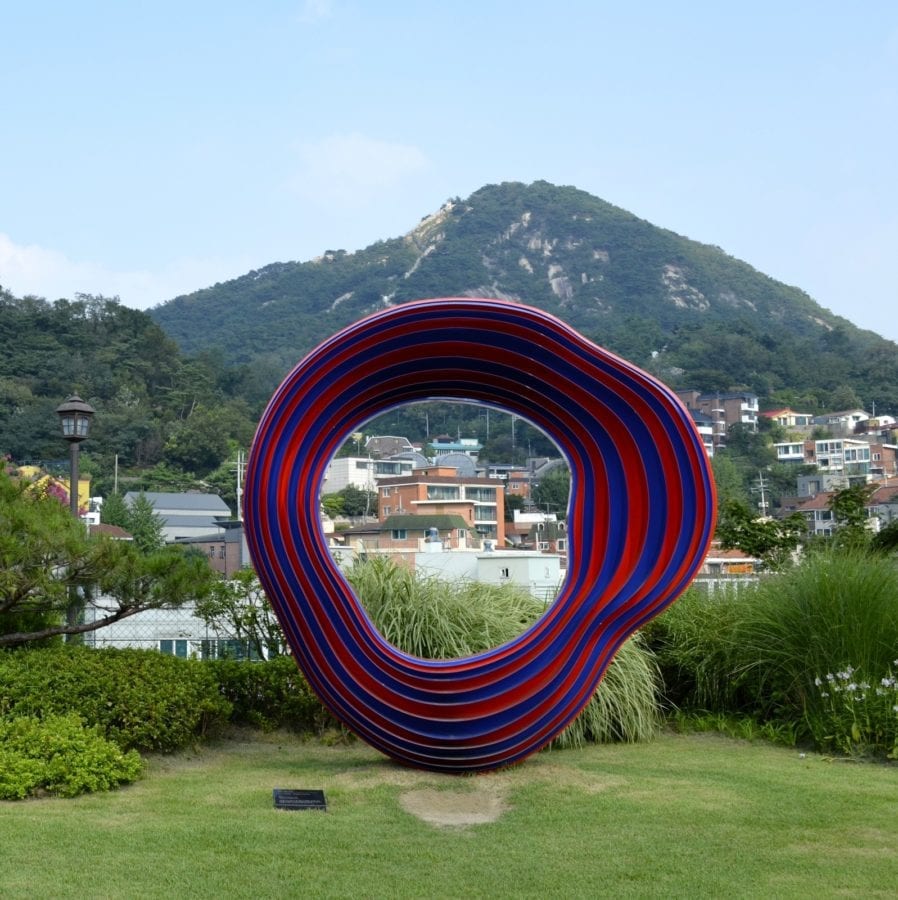
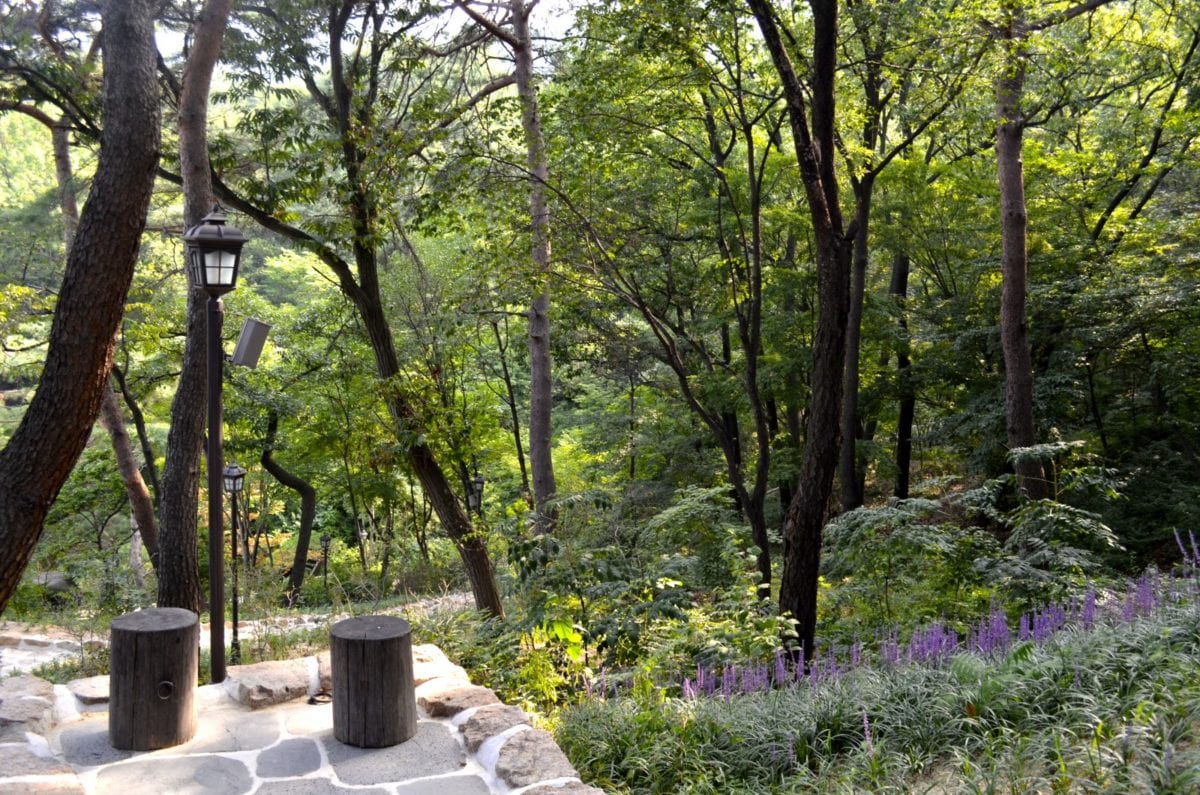
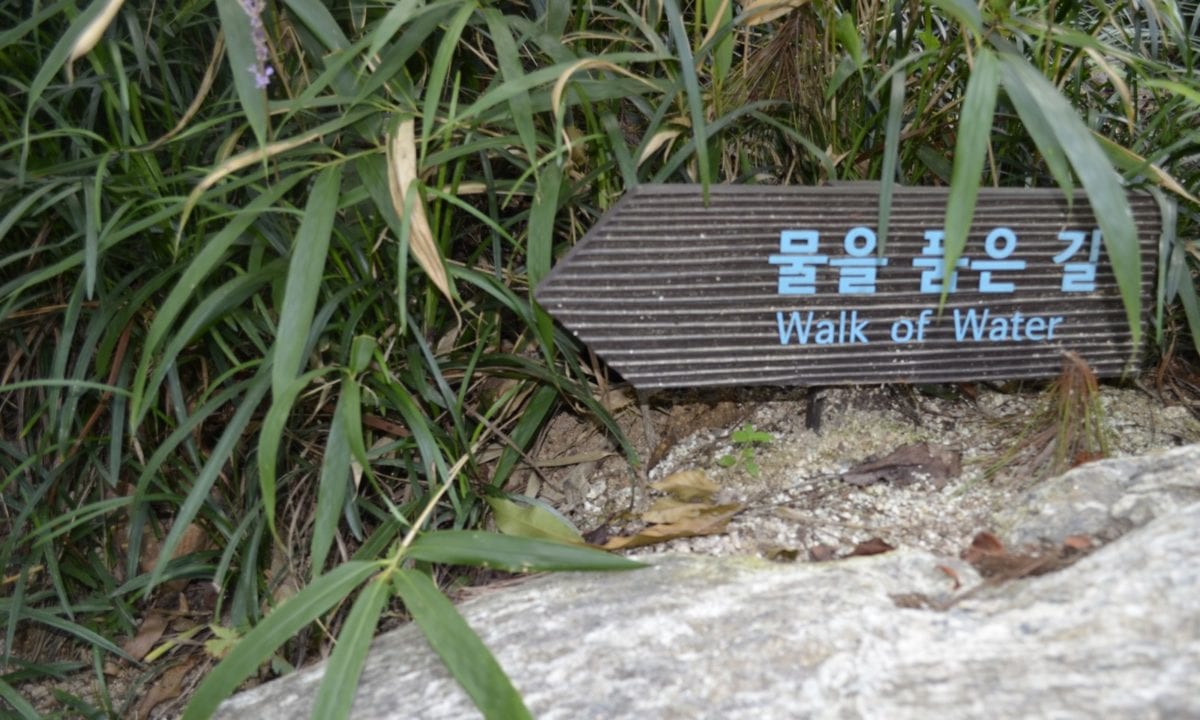 The main hanok, Byeolchae, is wrapped by a centuries-old, gorgeous pine tree which is protected tree No. 60 by the Seoul government. Pine trees are very dear to the Korean culture, their traits of steadiness and indomitable spirit follow the values displayed in the national anthem.
The main hanok, Byeolchae, is wrapped by a centuries-old, gorgeous pine tree which is protected tree No. 60 by the Seoul government. Pine trees are very dear to the Korean culture, their traits of steadiness and indomitable spirit follow the values displayed in the national anthem.
Past the hanok buildings, there are a number of short hiking paths named after the natural elements. There are a few other historical and natural landmarks to be discovered along the way and lovely classical music playing from hidden speakers throughout your journey.
Hours: 11:00 am-6:00 pm, entry is free with a Seoul Museum pass.
Syngman Rhee Institute Walk | 자하문로 37길길
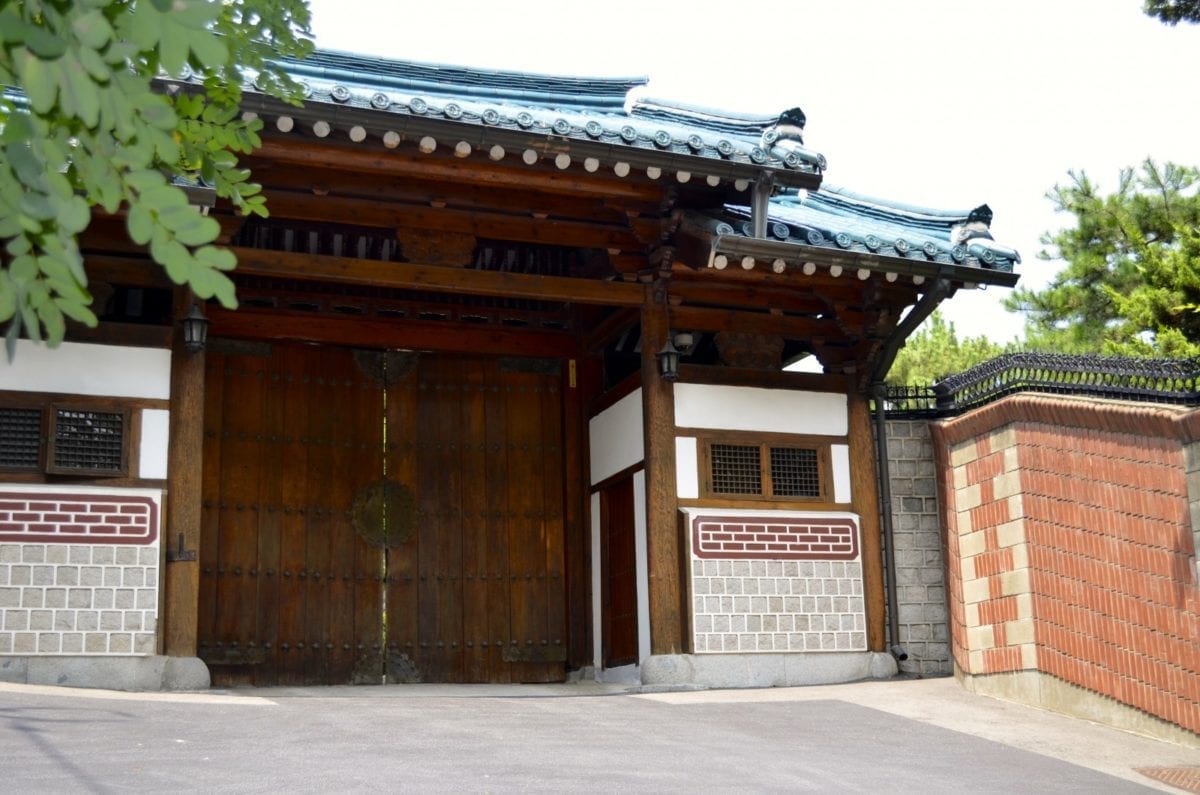
Just past the road of shops & boutiques and the Seoul Museum, you’ll notice a little alley road going up the hill. This road gives access to Yonsei University Syngman Rhee Institute of Modern Korean Studies and a small residential neighborhood.
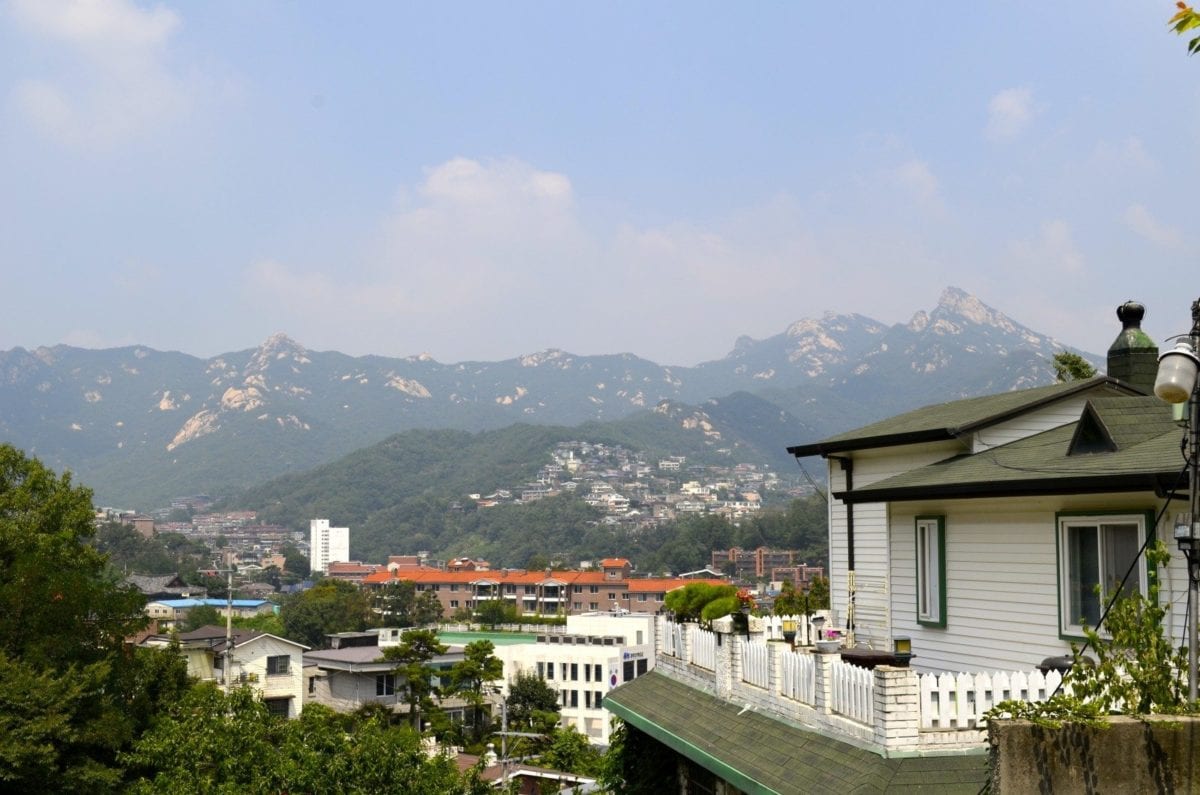
While you are not allowed to enter the complex without a pass from Yonsei, the walk itself is short and provides views of the elegant blue-tiled gate (similar to the design of the Cheongwadae Presidential residence) and views of the Buamdong Valley once you reach the end of the path.
Whanki Museum | 63 자하문로 40길, 종노구 서울
A private art museum and courtyard possessing over 6,000 of Whanki Kim’s works and personal items, this museum is the hidden gem of Buam-dong.
As I spoke to curator SeungLee Paik, she noted that their gallery space is recognized as the 2nd most beautiful museum in Korea (second only to the Leeum Samsung). The Whanki Museum strives to leave a moving impression on its visitors not only from its fantastic collection but also from its handsome grounds.
Likewise, no photographs are allowed in either museum to maintain a quiet environment in which to view the art.
Whanki Kim is best known as the father of Korean abstract art; he adapted Korean landscape scenes into jewel-toned, pointillism-styled canvases and cotton prints.
He is best known for his “Pointillism-Dot Painting” collection which expresses Korean lyrical sentiment and has been exhibited in Paris and New York as well as Seoul.
The museum complex itself features picturesque, landscaped gardens around the main exhibition hall, and a museum shop and cafe housed in the first annex building.
A short walk away is the educational center and access to parking.
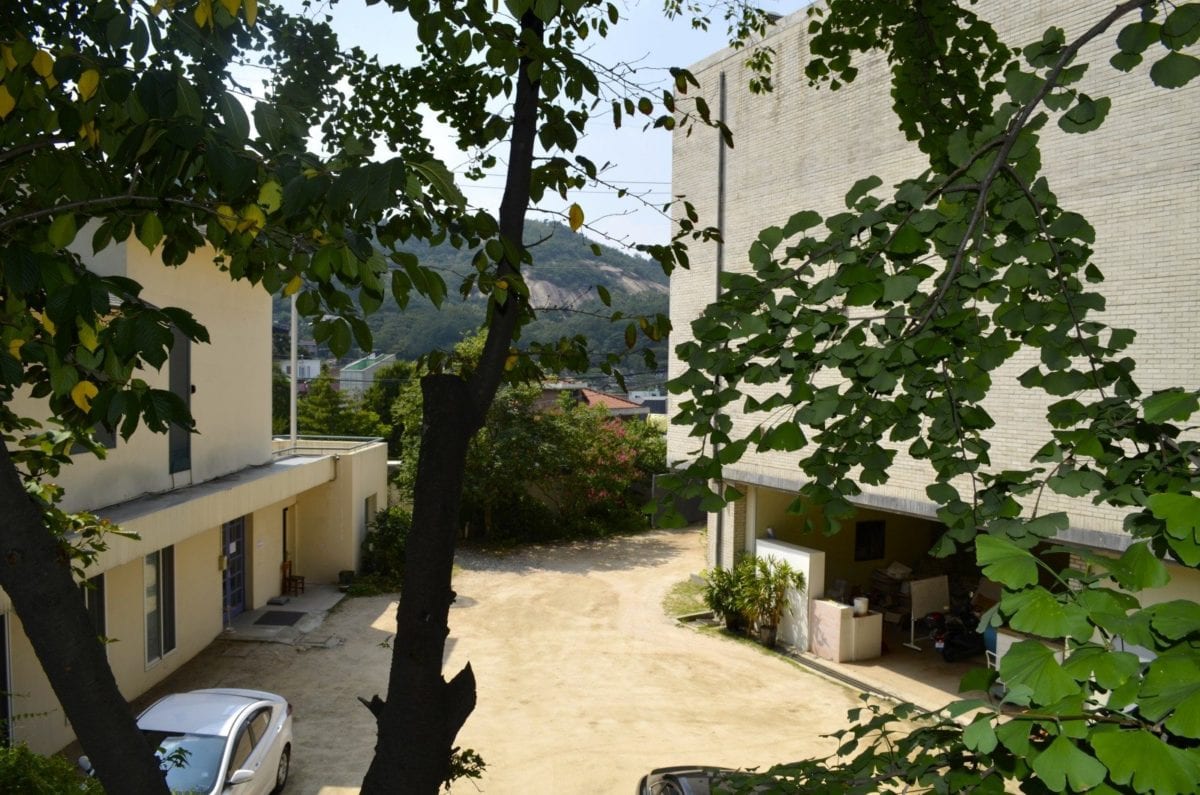
There is a rotation of five to six exhibitions a year, as well as cultural exhibitions, student showcases, and educational programs, so you may want to check the website ahead of time
10,000 for an adult ticket, 5,000 for a student ticket, and discounts available for large groups and seniors.
Check the current exhibition here.
Phone:82-2-391-7701/2
Closed Mondays and National Holidays.
Cafe Gallery (카페 갤러리) | 35-1 팔판동 종노구
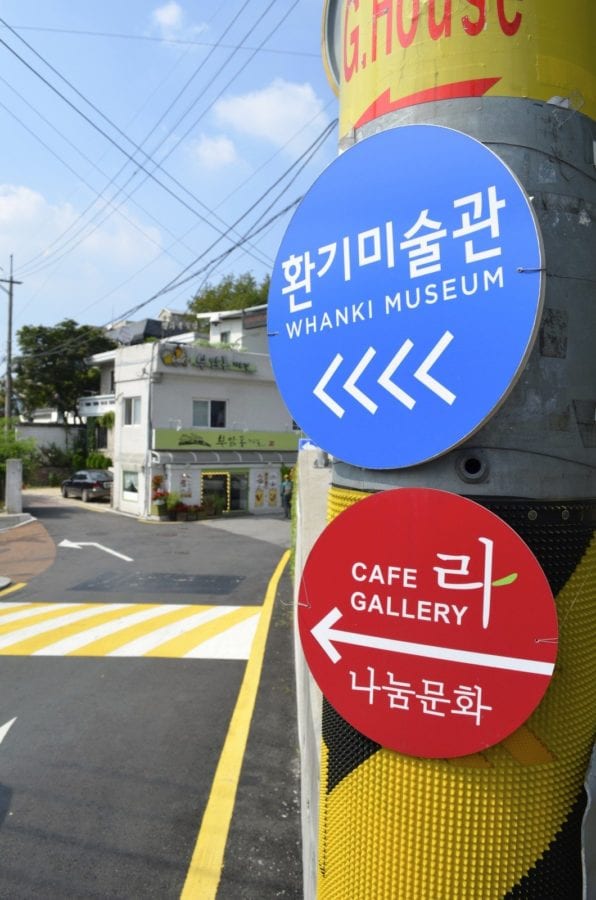
A 50m walk from the Whanki Museum, Cafe Gallery is a recently founded concept cafe by Namun Munwha. As a nonprofit organization, Namun Munwha aims to spread peace through the exchange of cultures, not only Korean but international ones as well.

Their cafe is housed on top of their offices (2nd floor) and has its own gallery spaces as well as an art book collection and pamphlets on current cultural happenings that you can peruse while sipping your espresso.
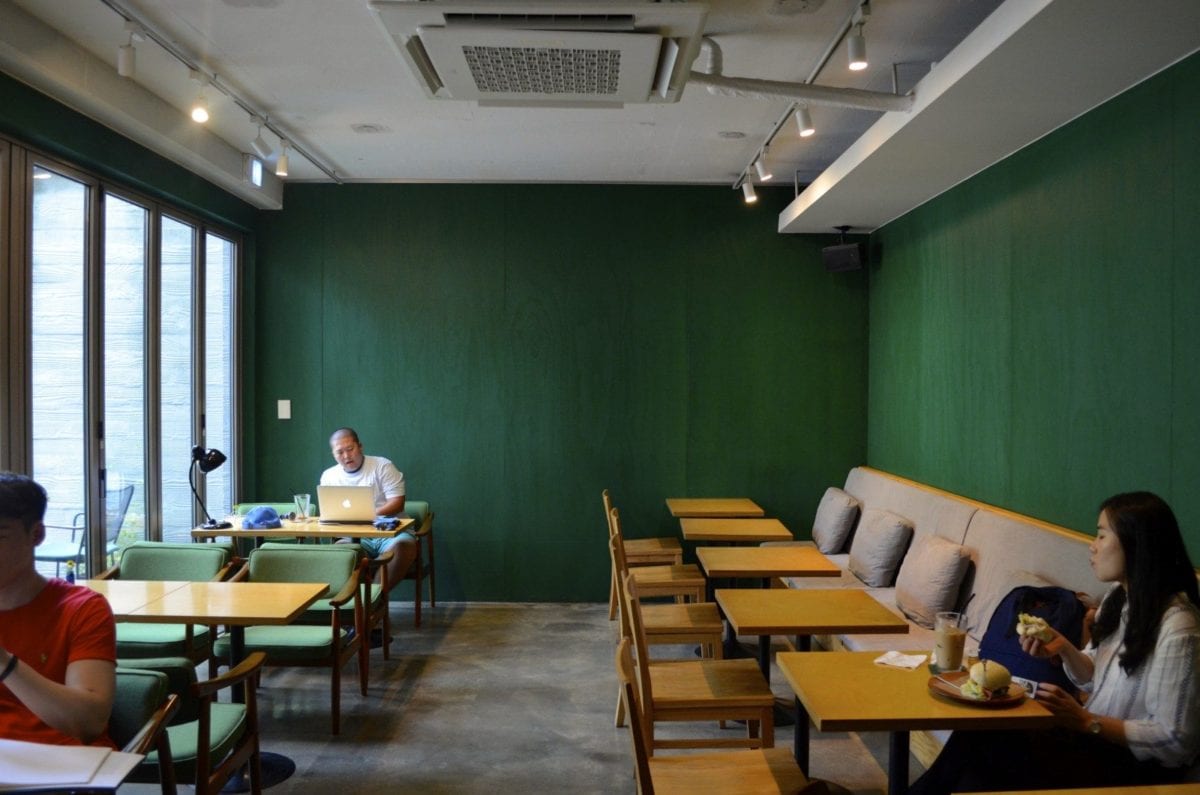
The cafe is quaint and filled with solo travelers and students enjoying towering sandwiches and ricotta cheese salads. The forest-green walls instill the cafe space with a serene atmosphere while reflecting the foliage on the patio outside.
Americano 5,500W, Gallery space entry is free of charge.
Phone: 02-379-1975
Chaguimun Gate (창의문) | 청궁동 종노구, 서울울
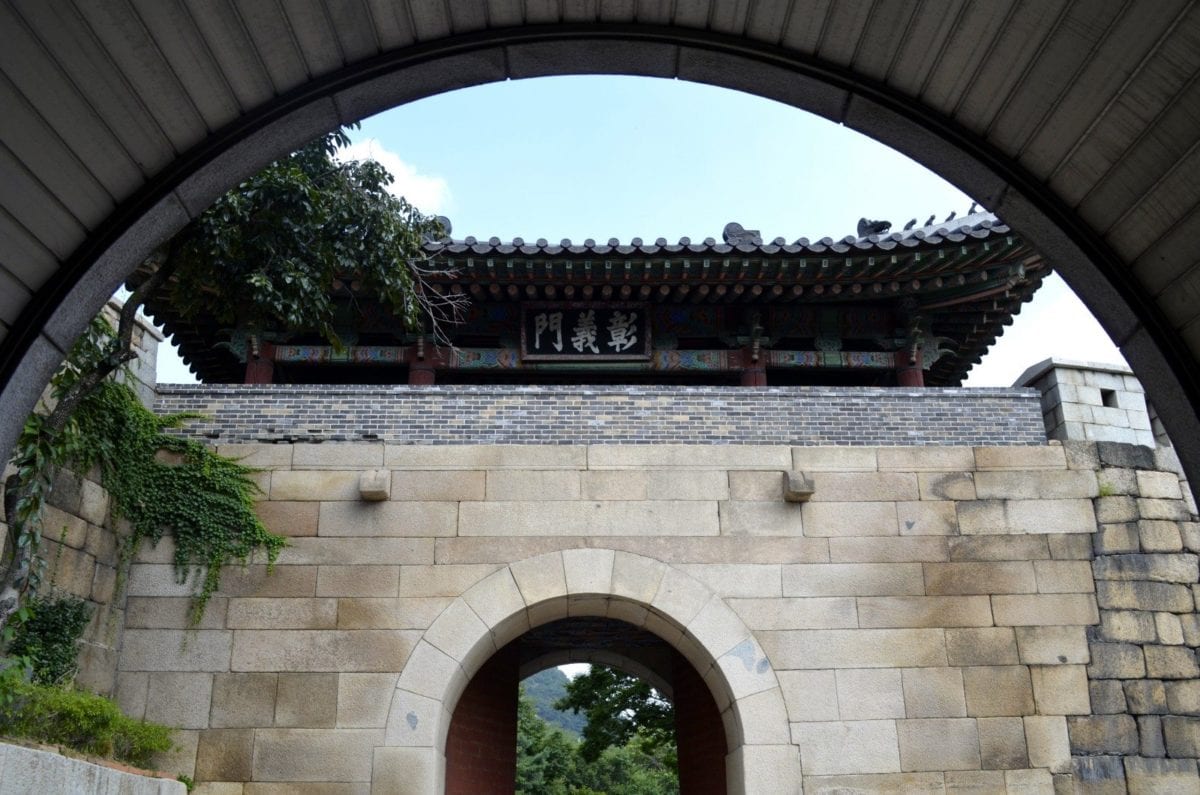
Changuimun Gate is the Northwestern-most gate of the “Eight Gates of Seoul” and is connected to the great Fortress Wall, built to protect Seoul from invaders during the Joseon Dynasty.
Originally constructed in 1396, Changuiman was the main exit and entry point to villages up North while the larger Sukjeongmun (North Gate) served a more ceremonial purpose.
While passing through the gate you can notice that the painted designs are of intertwining fowl rather than the typical dragons’ design that is so commonly used in royal architecture.
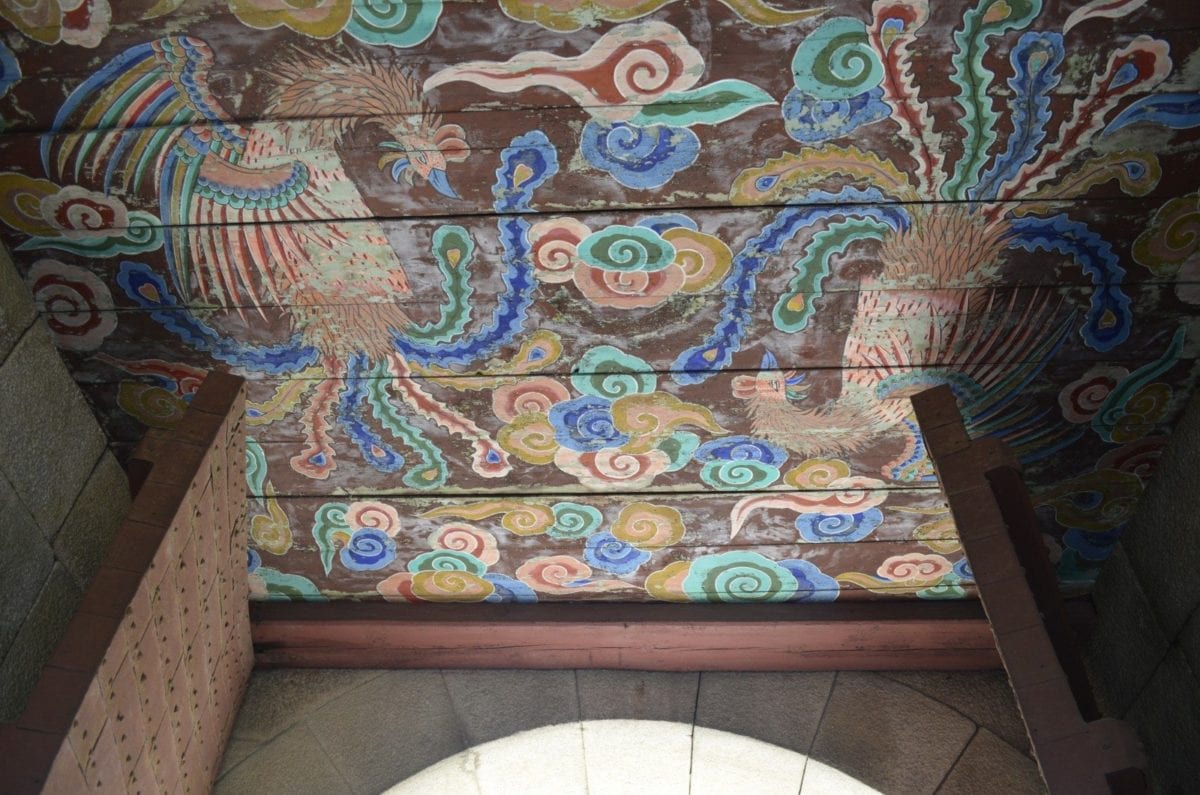
The wooden pavilion was previously burned down by Japanese attackers in 1592 but rebuilt in the mid-1700s in the style of the Goryeo Dynasty.
Visitors are allowed to walk through and climb the steps around Changuimun free of charge; it is also the official starting point 18.7km Hanyangdoseong walk.
As the trail passes through the restricted military property, you will need to apply for a permit at the Information Center using a valid, government-issued ID.
Yoon Dong Ju Literature Museum (윤동준 문학관) | 63 자하문로 40길 종노구 서울
The bus stop prior to the Buamdong Community Hill, the Yoon Dong Ju Literature Museum lends access to the Poet’s Hill Hiking Trail and Changuimun Gate.
The late poet Yoon Dong Ju (1917-1948) is famed for his collection of poems ” Sky, Wind, and Stars”. The collection was published posthumously after he passed away in a Fukuoka Prison during the height of the Korean Independence Movement, but now Yoong Dong Ju is widely celebrated for his nationalist spirit.
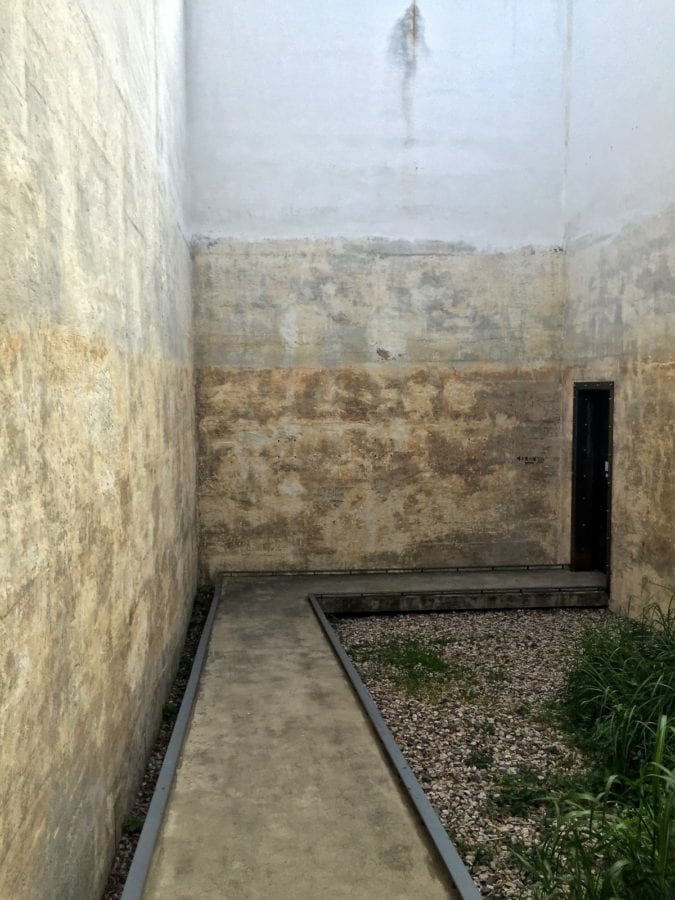
This museum itself is a work of art; in conjunction, the Jongno-gu government and Yoong Dong Association remodeled a former water-pumping station for Mount Inwang into three separate exhibition halls.
The contrast of the stark, industrialist-era concrete halls and the slowly flowing water and Star gardens provide a tranquil environment for viewing such moving poetry.
While the first exhibition hall is a traditional, renovated gallery space, the second hall is an open well pictured above, accessed by sliding rustic iron doors.
The third exhibition hall is a former water pressurization tank in which you can sit and view a short documentary, projected onto the inner walls.
Entrance is free, open 10:00 am- 6:00 pm (Closed Mondays and National Holidays)
View Yoong Dong Ju’s poetry in translation here.
Phone: (02-2148-4175)
Where To Eat at Buam-dong
Art for Life Cafe/Restaurant | 110-816 서울시 종로구 부암동 29-4
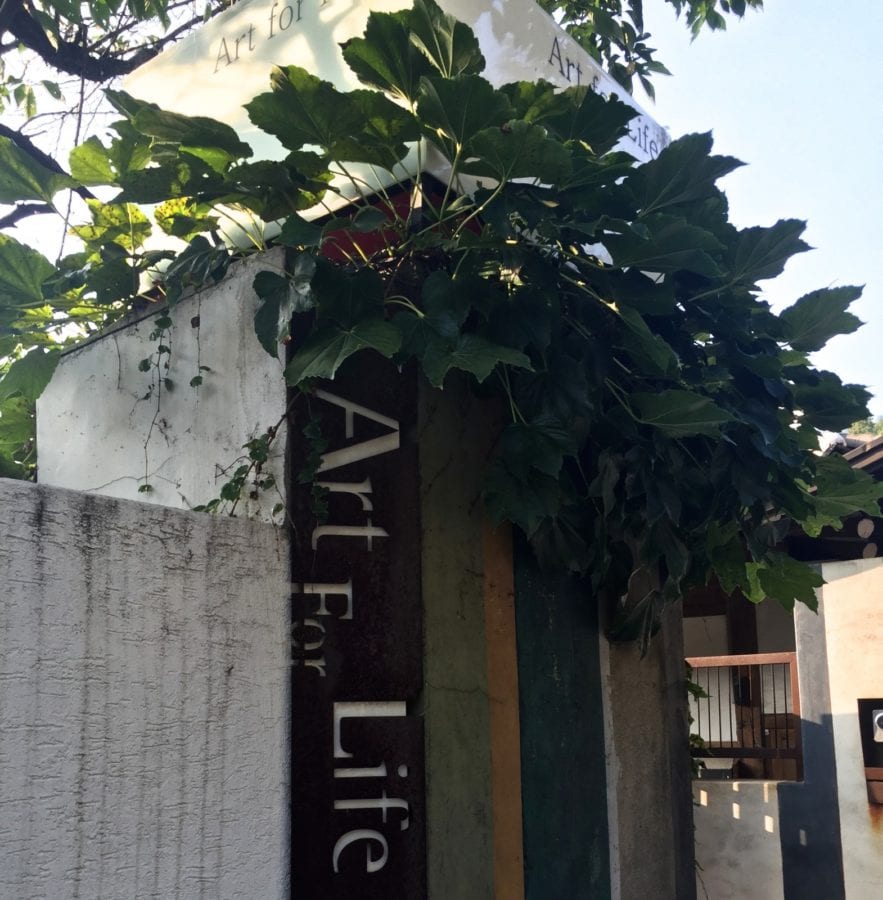
A must-go place along the road to Samtoongye Cafe and Palgakjeong. It maybe is the sculpture garden or the beautiful hanok building, the art gallery or photographs inside, the prosciutto appetizer and chilled sangria, or the warm and friendly owners, but this place will make a lasting impression upon you.
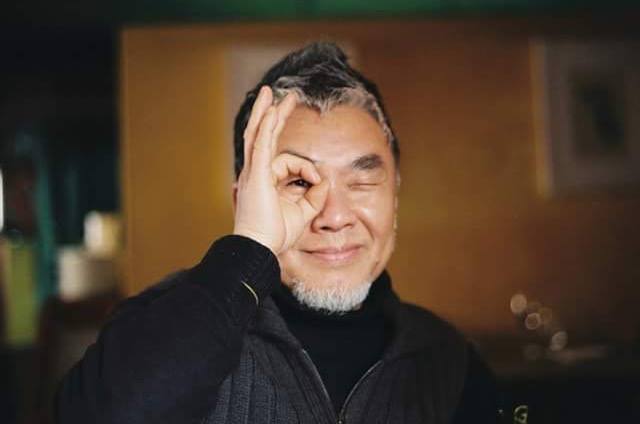
After leaving the Seoul Philharmonic and retiring from a fifty-year as a professional oboist, Seong Phil Kwan, or “Phillip” opened his fusion Italian restaurant and art space in Buamdong in hopes of sharing good music, food, and art with others.
The walls are painted in a loving crimson hue and adorned with film photographs of musicians and friends alike who frequent the cafe. There is indoor and outdoor seating as well as an extensive dessert menu of affogato, banana flambé et Cointreau, and a beautiful wet bar.
Each Saturday evening starting at 5’oclock there are open concerts for classical, jazz, or folk music with pop-up performances happening often as well. Seats are limited to about 60 persons and reservations are mandatory.
At 70,000W this is a great price for an Italian set dinner and night of beautiful music, portions of the proceeds are donated to the arts and charity as well.
View a performance at Art For Life Cafe here.
Phone: (02) 3217-9364
Jaha Son Mandoo | 서울시 징로구 백석동길 12
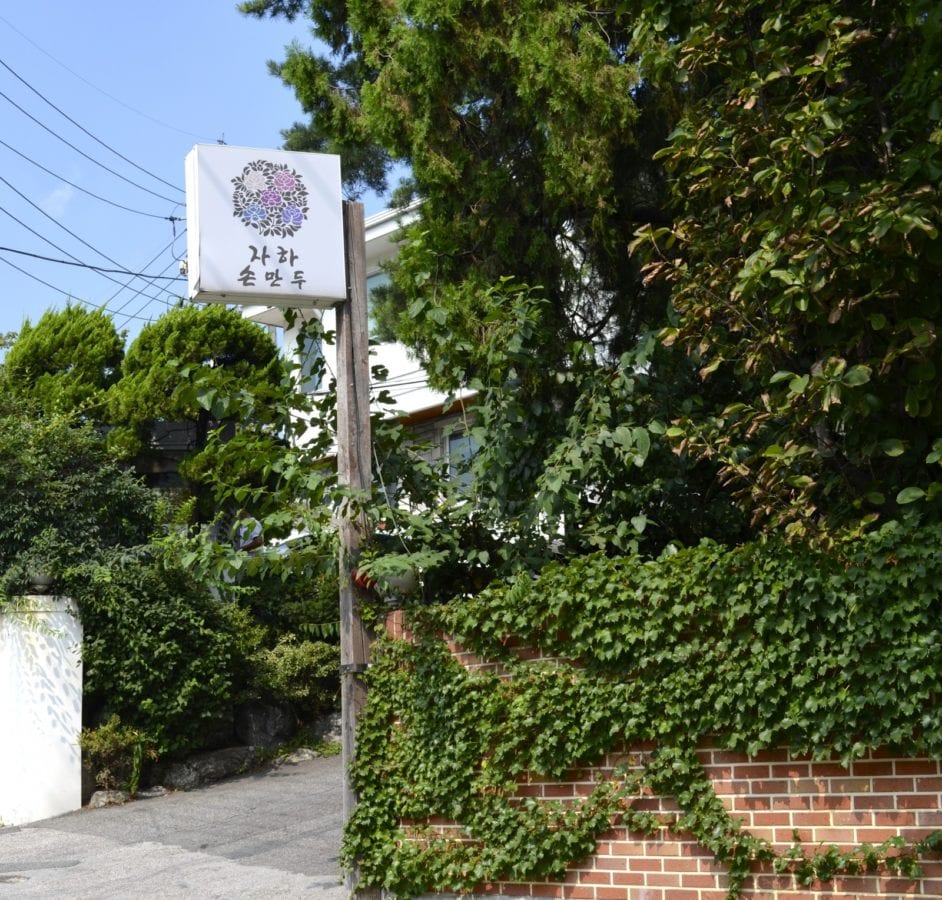
Another famous destination, this upscale three-story dumpling restaurant tucked away on a hill of the main road serves up thick, chewy affairs of dumplings and amazing views of the valley.
Korean dumplings, or mandu, are served steamed or boiled here with a side sauce of house-made soy sauce and rice vinegar.
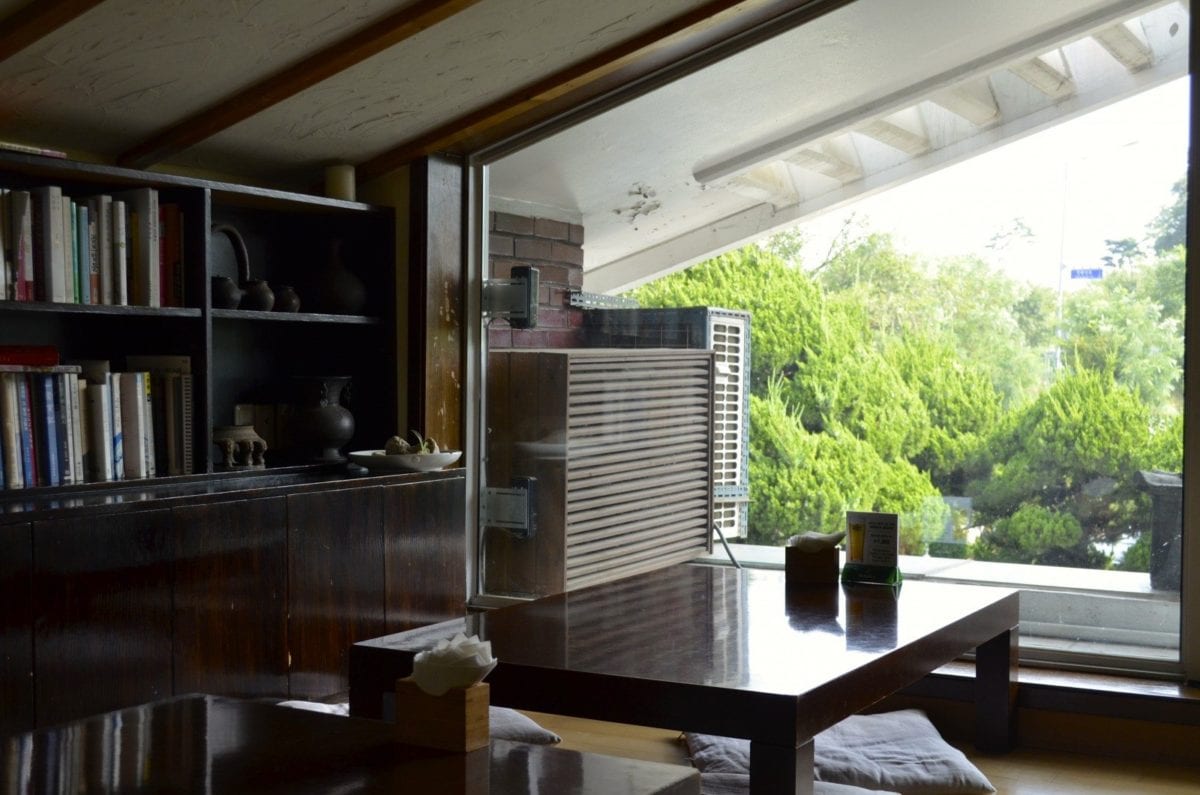
To sample mandu you can choose from Vegetarian (shitake mushroom and cucumber), Kimchi (kimchi and green onion), or the Classic Mandu ( meat, cucumber, and mushroom).
Each Mandu plate includes four palm-sized Mandu with the shells naturally colored from ground yam or spinach mixed into the rice flour (4,500-5,500W).
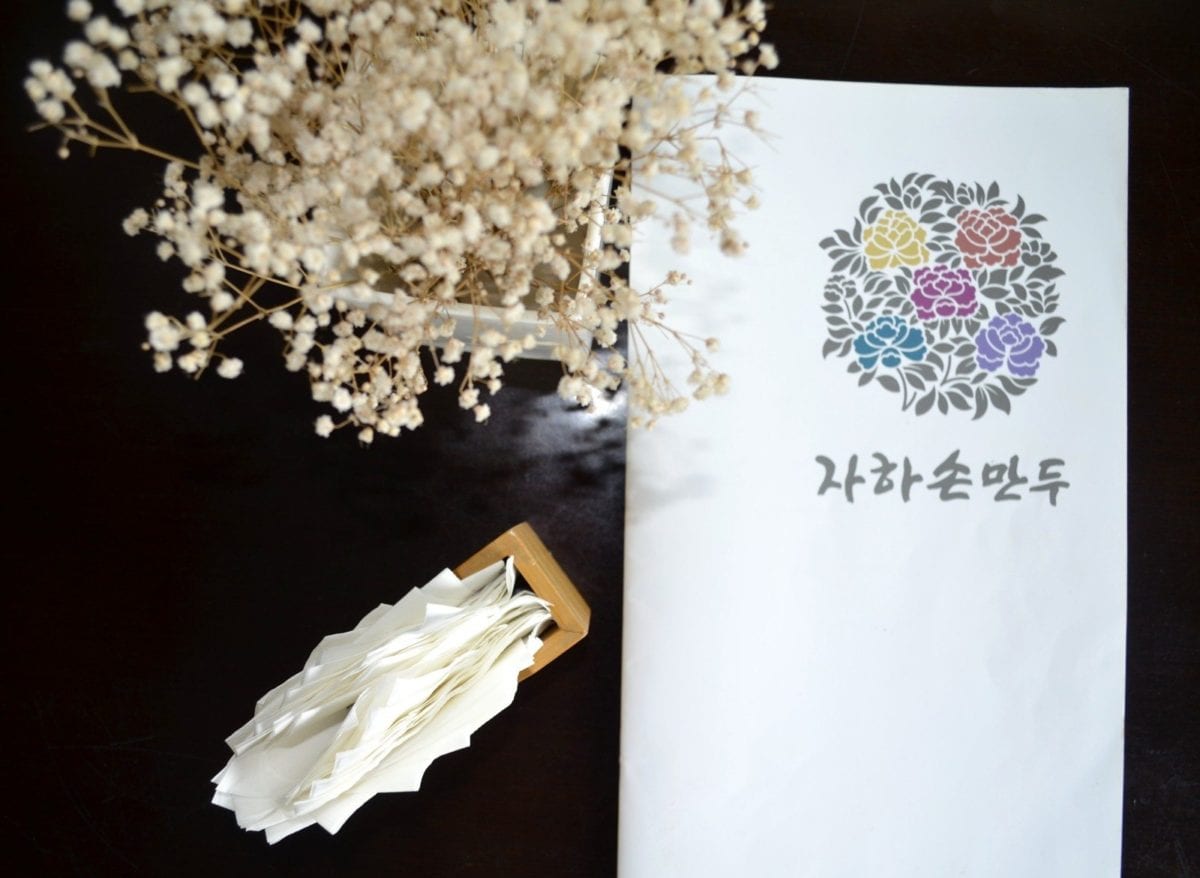
If you’re on a budget, the Ddeok Mandu Guk (Rice Cake and Dumpling Soup) is an eye-catching spectacle and very filling at 12,000W. Three varieties of Mandu are boiled together in beef broth with a generous amount of thick rice cake balls.
Three varieties of Mandu are boiled together in beef-bone broth with a generous amount of thick rice cake balls. The flavors are very light, fresh, and subtle; if you’re not keen on large amounts are garlic, ginger, or chili then these are the dumplings for you.
The flavors are very light, fresh, and subtle; if you’re not keen on large amounts of garlic, ginger, or chili then these are the dumplings for you.
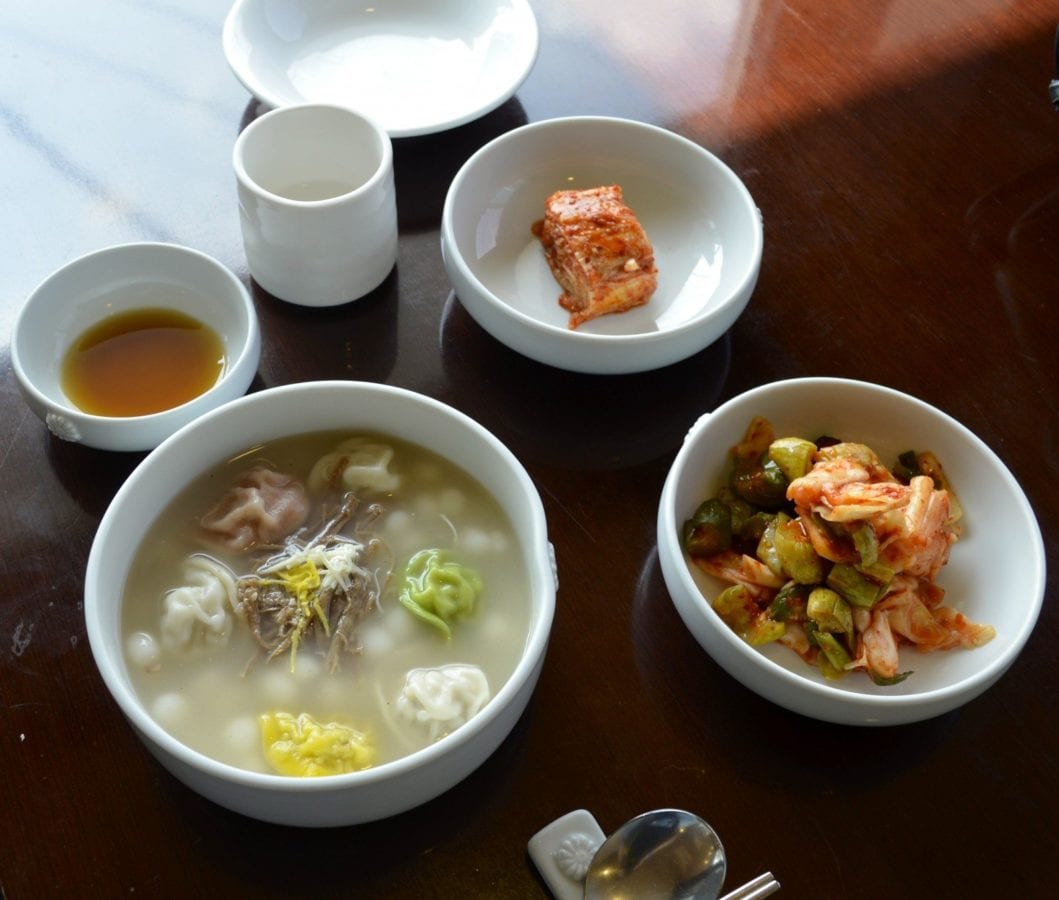
This restaurant is known, however, for their 39,000W course meal called “Jaha Sangcharim” including seasonal porridge, jelly, vegetarian dumplings, jellyfish salad, yellow pancakes, and then your choice of dumpling soup or dumpling casserole!
All of this food is topped off with a seasonal Korean dessert tea, but it’s recommended you pair your set meal with Bokjunja ju as well, a liquor distilled from black raspberries found in the mountains. It is a great flavor pairing with the dumplings and packs in a 15% alcohol content.
Valet parking and both Western and Eastern style seating is available
Phone: 02-397-2648
Gyeyeolsa Chicken | 서울시 졶로구 부암동 258-3
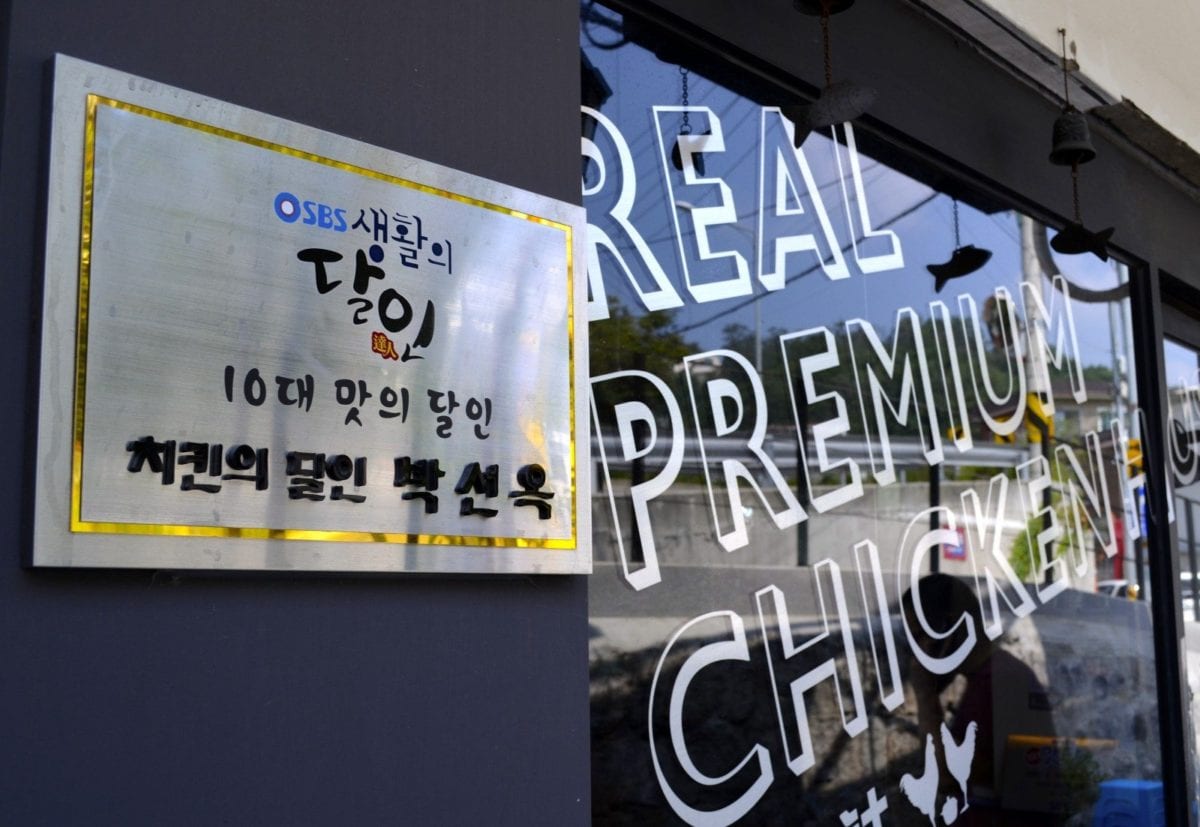 There’s a seemingly unlimited amount of chicken joints in Seoul, but Gyeolsa Chicken is definitely in the top 3.
There’s a seemingly unlimited amount of chicken joints in Seoul, but Gyeolsa Chicken is definitely in the top 3.
Most chicken houses only fill up in the evening, as people douse their post-work sorrows in fried goodness, but Gyeolsa is sure to be packed at all hours of the day.

Not to be dismissed as just anju (alcohol accompaniments) this chicken takes center stage for its crispy, salty outer layer that encases a wonderfully moist piece of chicken.
Each 20,0000W basket will get you 12 pieces of chicken topped off with crispy, ajuma-sliced potato wedges, and the obligatory dipping sauce and cubed radish.
The menu is only in Korea, but the waiters here will pretty much assume what you want to order (fried chicken – 후라이드 치켄).
If you’re feeling adventurous, they also offer an olaegi snail dish or snails in pasta (golbaengi guksu- 골뱅이 국수).
Phone: 02-391-3566
Tify This is For You | (펍 종로구 자하문로38길 9)
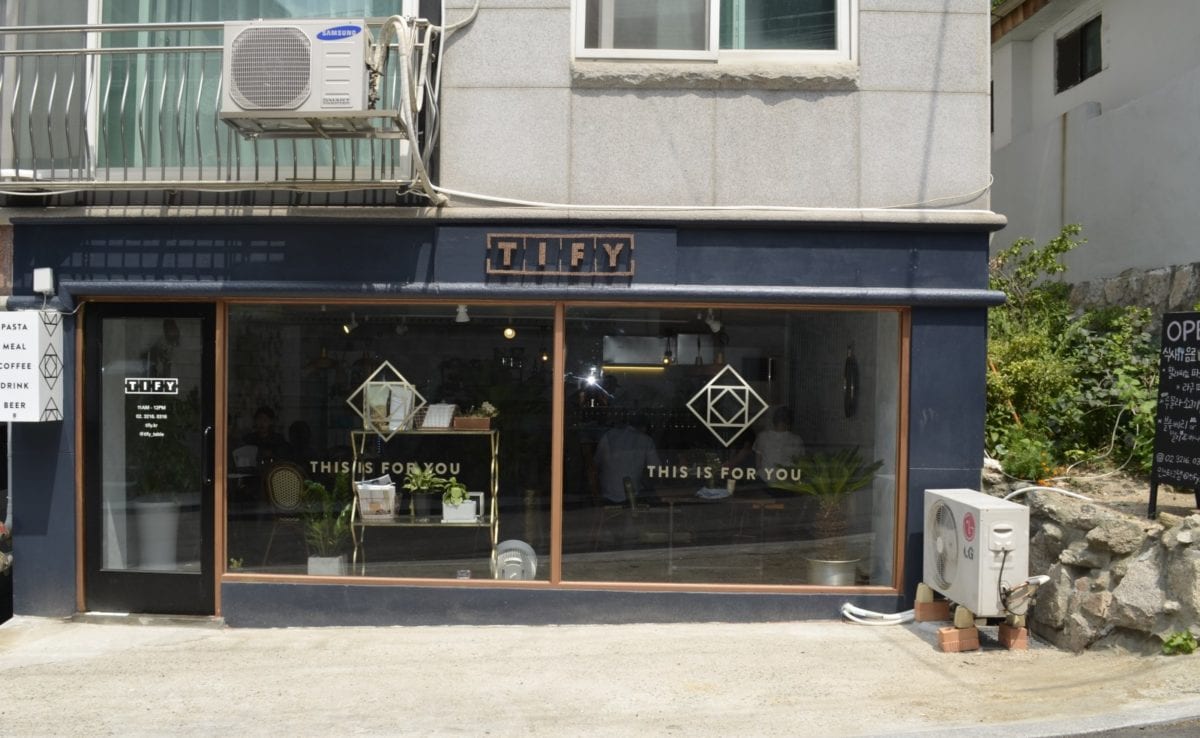
A casual restaurant serving homemade pasta, green salads, craft beers, and of course coffee. It opened only two months ago and already has a miniature fan club for its tomato ragu and jalapeño cream dishes.
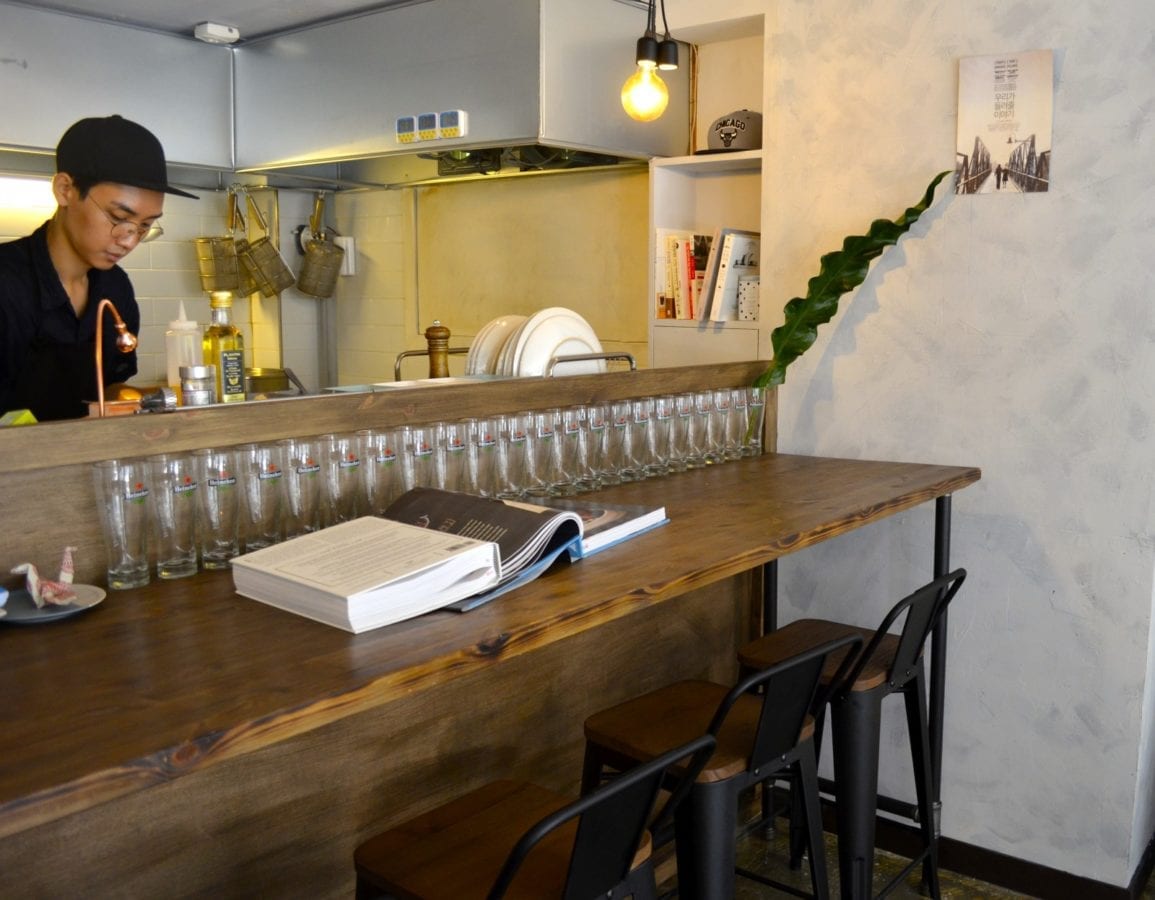
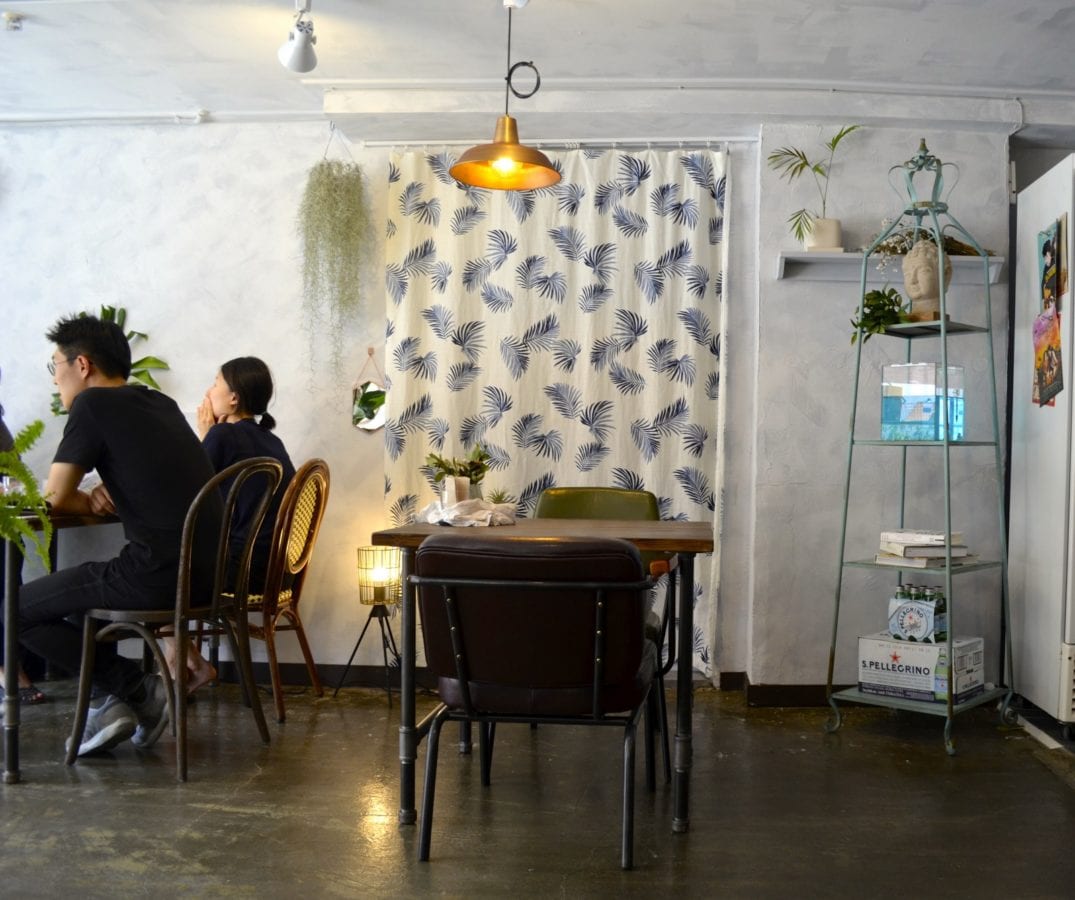
The environment offers a calm respite from the busy main road and bustle of tour buses outside the Seoul museum. To find it, cross the main road from the Seoul museum, turn right of Alice’s teapot, and continue up the clothing boutique road until you spot the cerulean blue walls.
Phone: 02-3216-031
Buamdong Way Chicken (부암동 가는길) | 서울 종로길 백석동 13
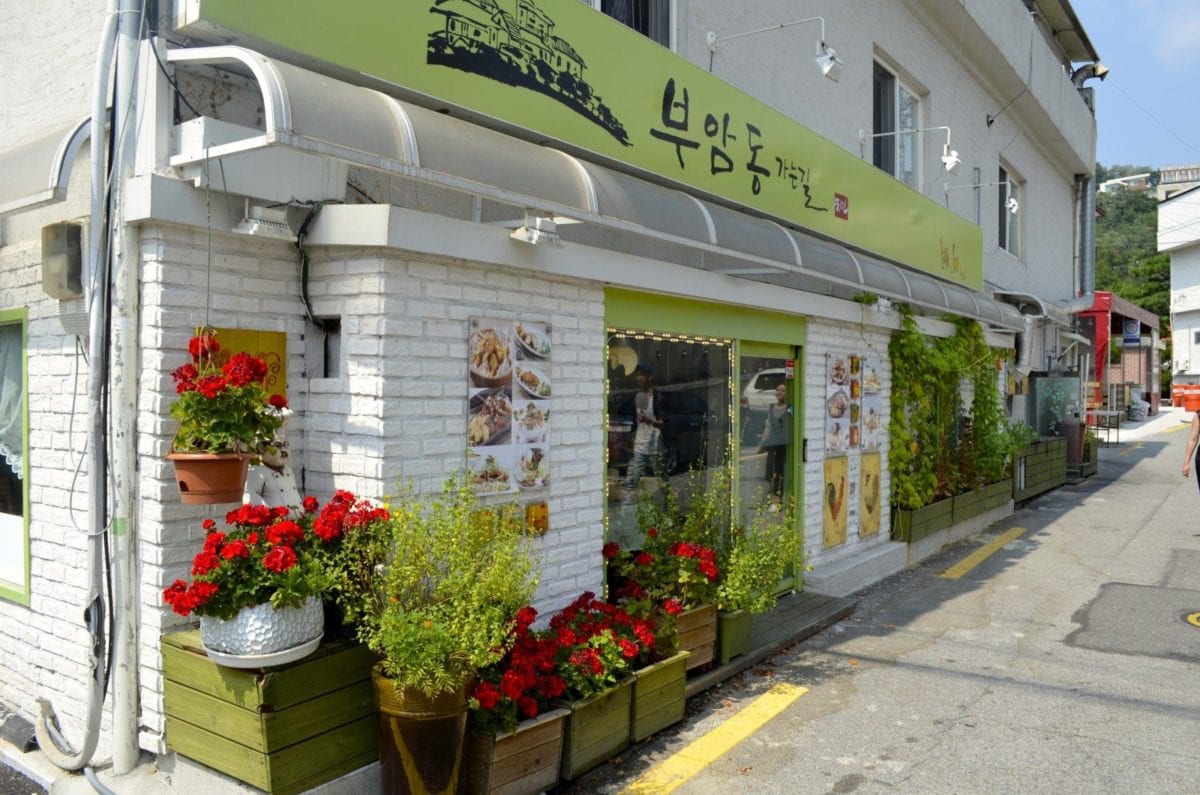
Continue down the road past Gyeolsa Chicken and Jaha Sonmandu and you’ll notice a cheery green storefront, decorated with rooster figurines and red chrysanthemums. This is the friendly newcomer to Buamdong’s chicken scene, Buamdong Kaneun Gil.

Here the ajummas do not bark coarse orders but bring iced barley tea and picture menus to your table with a smile. I really appreciated the bright and airy environment as well as the attention to detail in the chicken-themed decor.
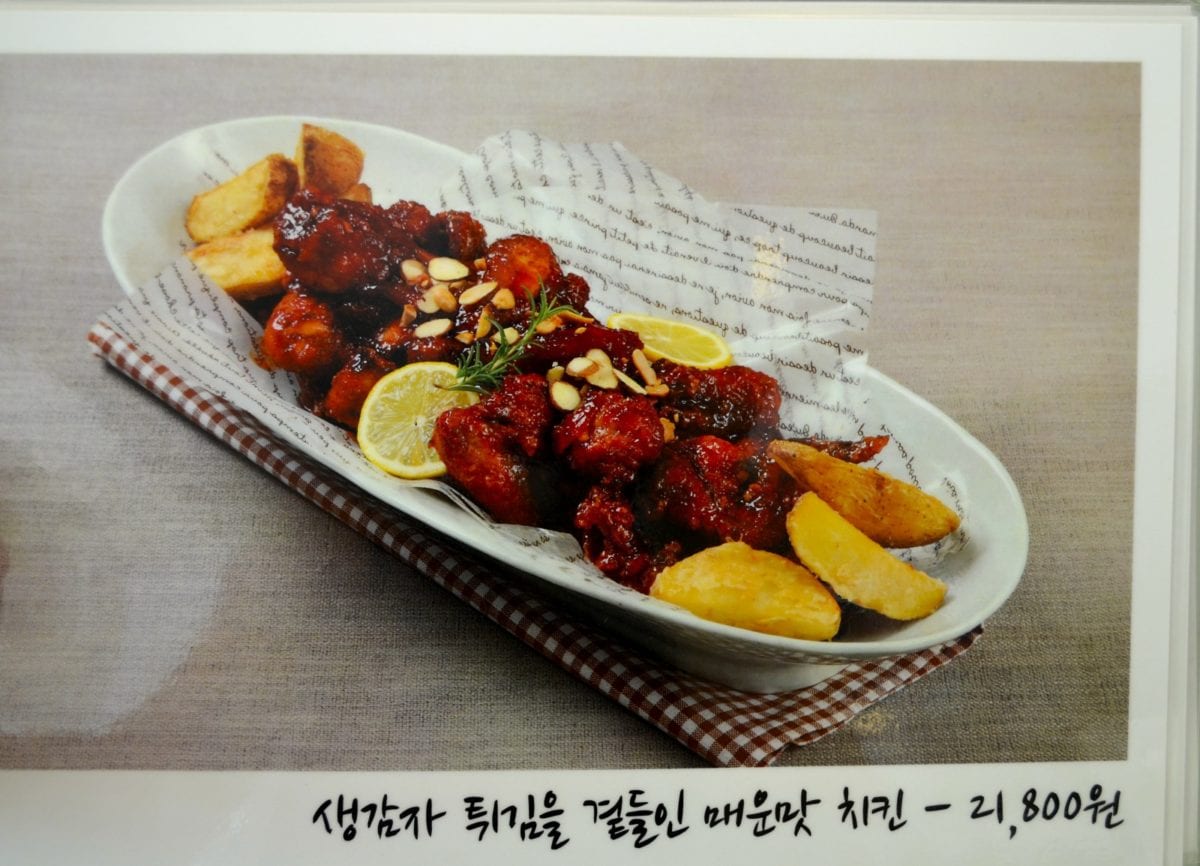
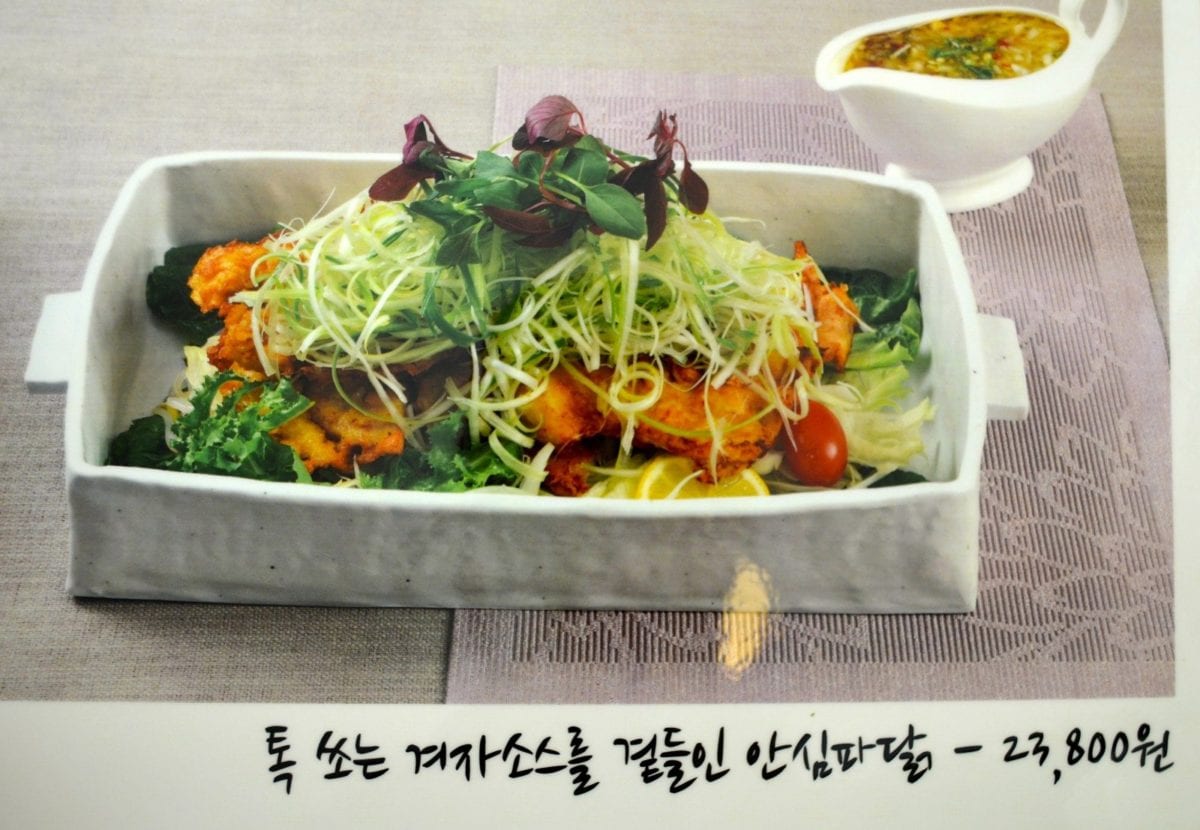
The specialty of this restaurant is their saucy sesame oil and honey mustard battered chicken and the spicy Quinyang pepper fried chicken. All dishes come in beautiful white porcelain boats with a green salad or home fries (21,800- 23,800W).
Sweets Galore
Boobing Bingsu Jib (부빙) | 서울특별시 종로구 창의문로 136
A bright turquoise storefront greets your eyes as you step off your bus. Is it a children’s toy shop? a gardening store? No, it’s Bubingsoo, a delightfully cute shaved ice dessert cafe that is decorated with a polar bear and penguin motif.
Step up to the counter to order and you’ll notice soft Beatle’s music and a menu that offers the classic (red bean) patbingsu alongside seasonal favorites like pumpkin, summer corn, and Korean white peach. During the winter, a sweet red bean soup is also best here.
During the wintertime, a homemade sweet red bean soup is also the best bet here.
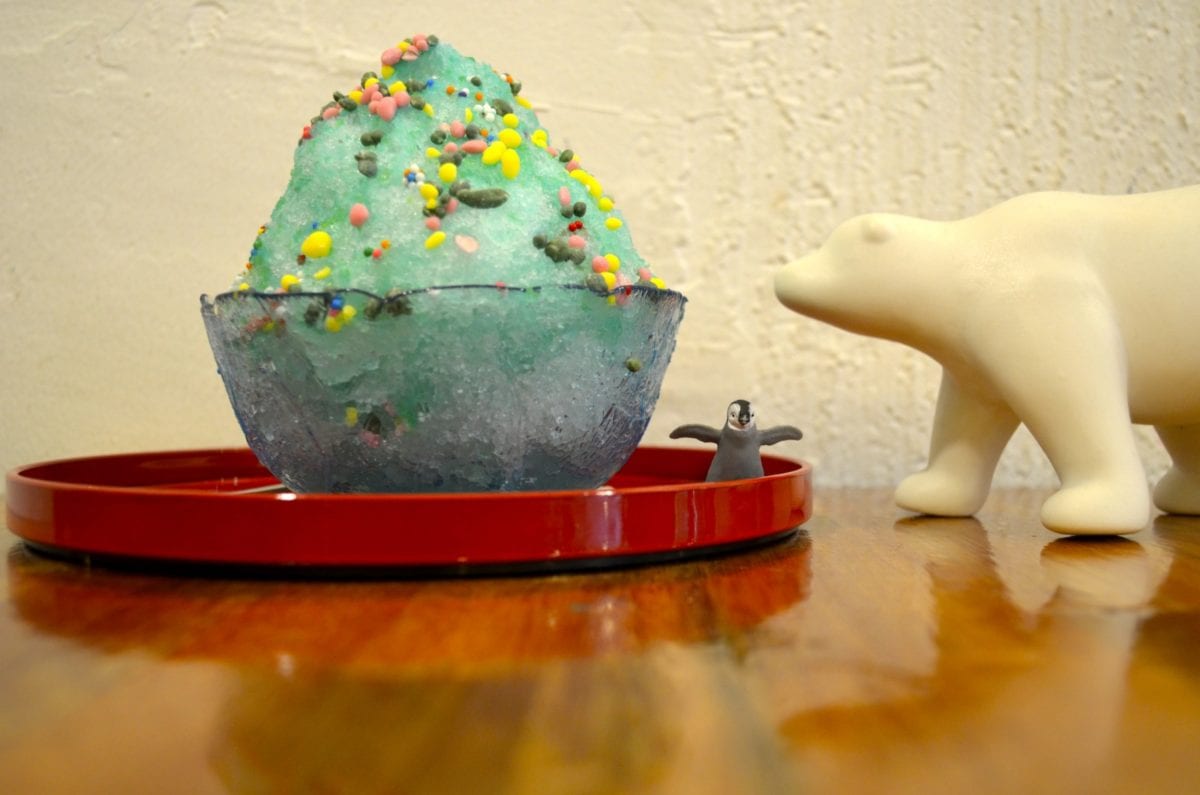 This is one of the few dessert cafes that still uses freshly shaved ice, rather than an ice cream replacement or milk snow. Still, the taste is not lacking in any way. We had the gourmet Blue Lemon “Popping Candy”
This is one of the few dessert cafes that still uses freshly shaved ice, rather than an ice cream replacement or milk snow. Still, the taste is not lacking in any way. We had the gourmet Blue Lemon “Popping Candy”
We had the gourmet Blue Lemon “Popping Candy” Bingsu that brings back childhood with its eye-catching colors and sugary bits that literally fly off the ice mountain.
7,000W for 1-person size ranging to 16,000W for 2-person specialty bingsu.
Phone: 02-394-8288
SCOFF British Bakery | 서울시 종로구 부암동 278-5
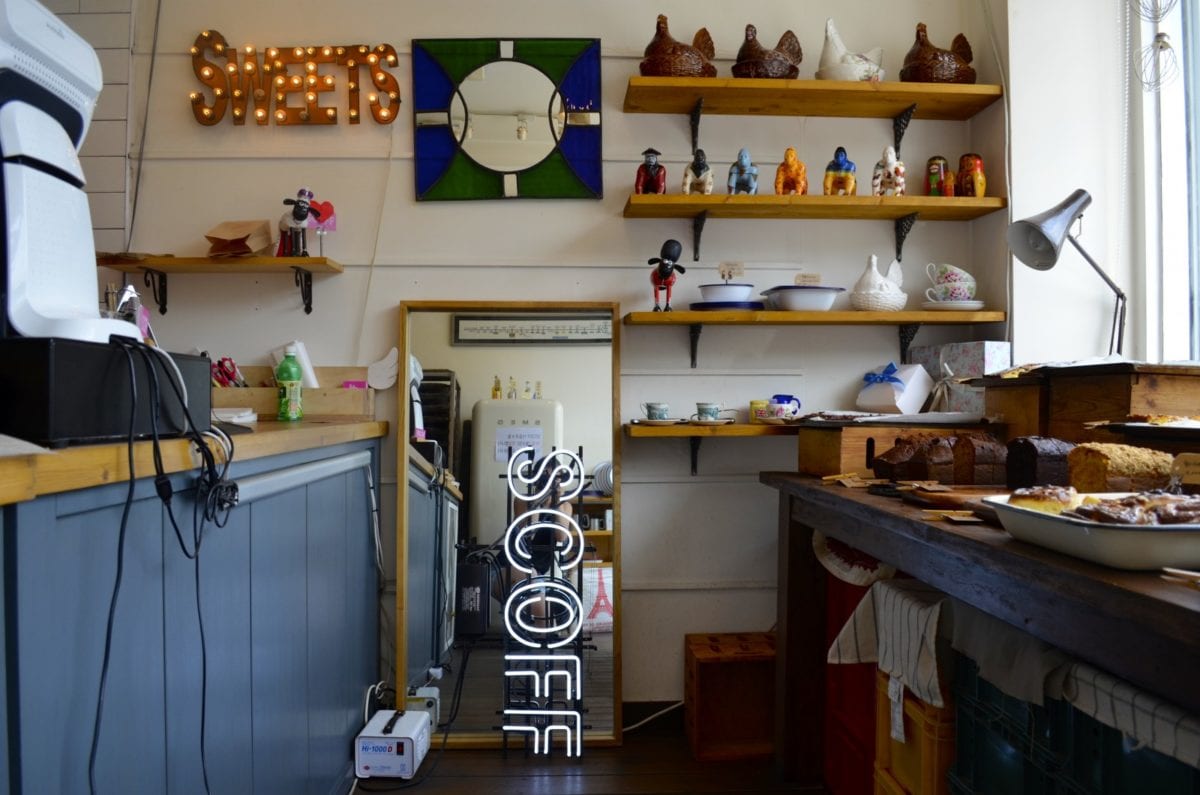
By far my favorite bakery in Seoul. If you’re partial to chewy, moist brownie slabs, citrus-infused and cranberry-studded Hot Cross Buns, and generously honeyed slices of ginger cake that span the length of your hand, then SCOFF is the place for you.
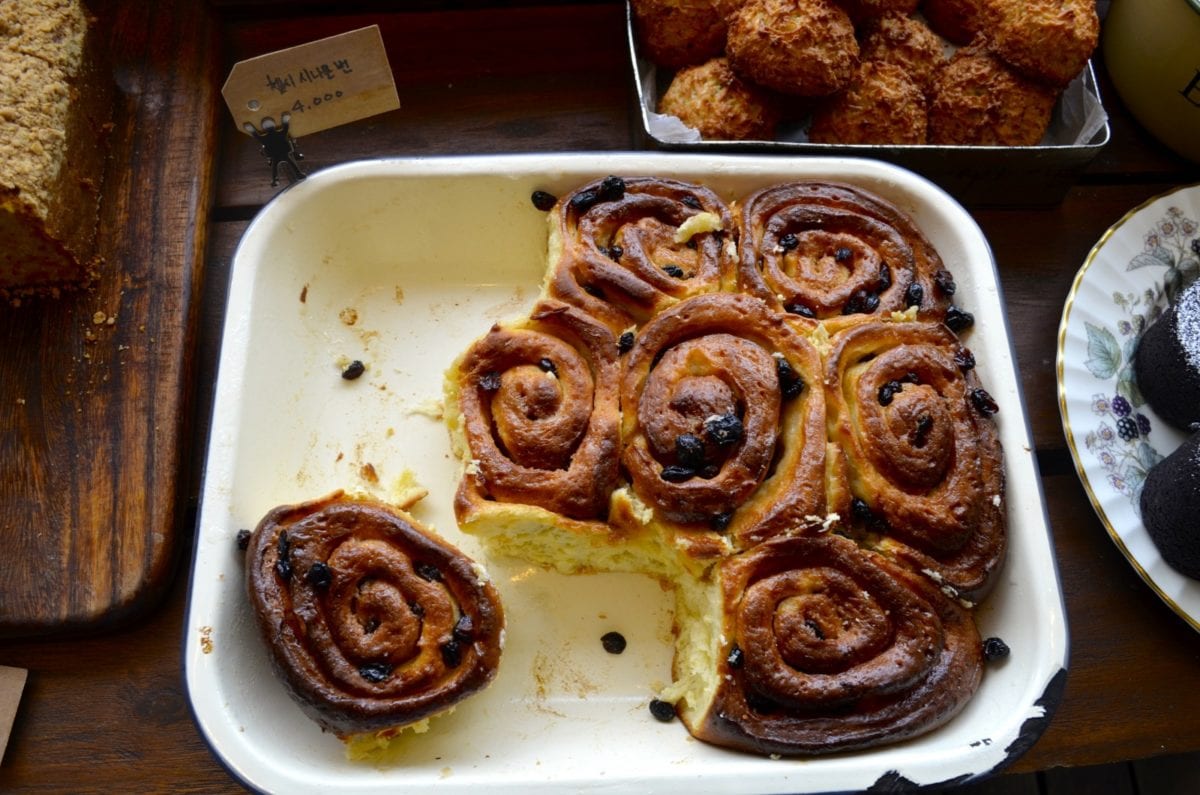
Opened by a British native just a year ago, SCOFF is already a regular across the Naver food blogs for its fabulously doughy treats. Rare slices of dessert breads like Banana Cake and pillowy, crusted scones are authentically unique imports to Seoul.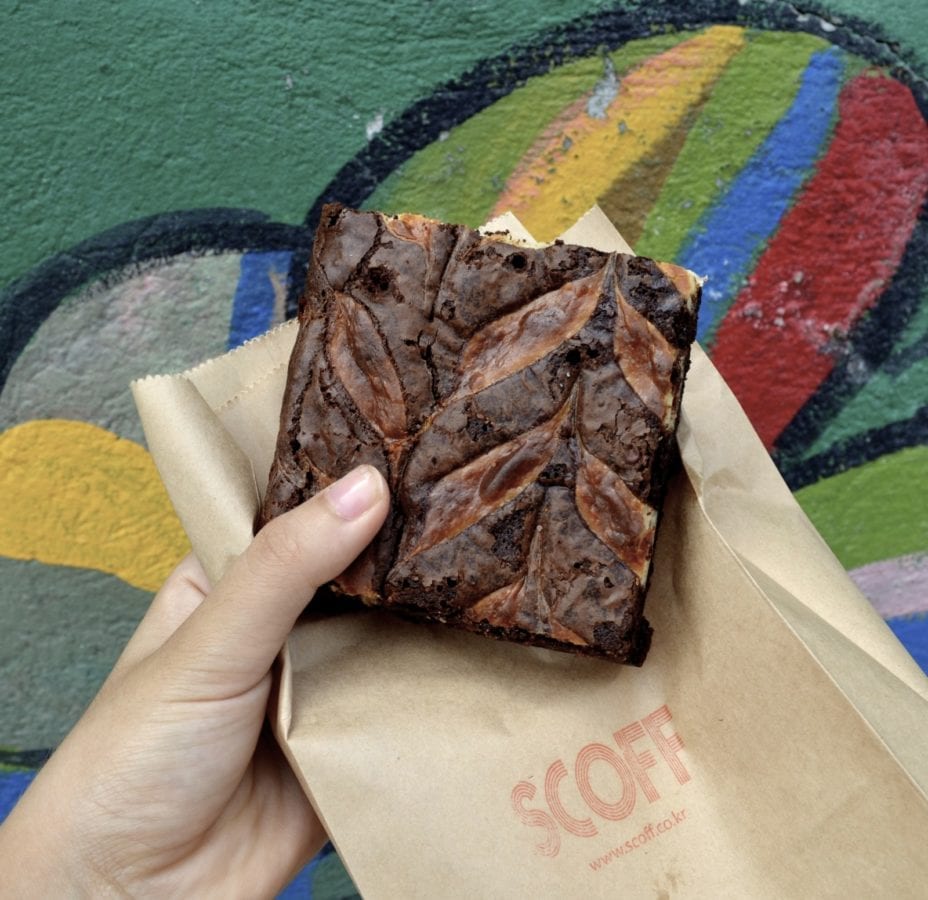 The only thing stopping me from buying up the whole bakery was the fact there was no seating available. My little arms can carry only so many delicious baked goods, so I grabbed a Cream Cheese Brownie (4,500W) to go.
The only thing stopping me from buying up the whole bakery was the fact there was no seating available. My little arms can carry only so many delicious baked goods, so I grabbed a Cream Cheese Brownie (4,500W) to go.
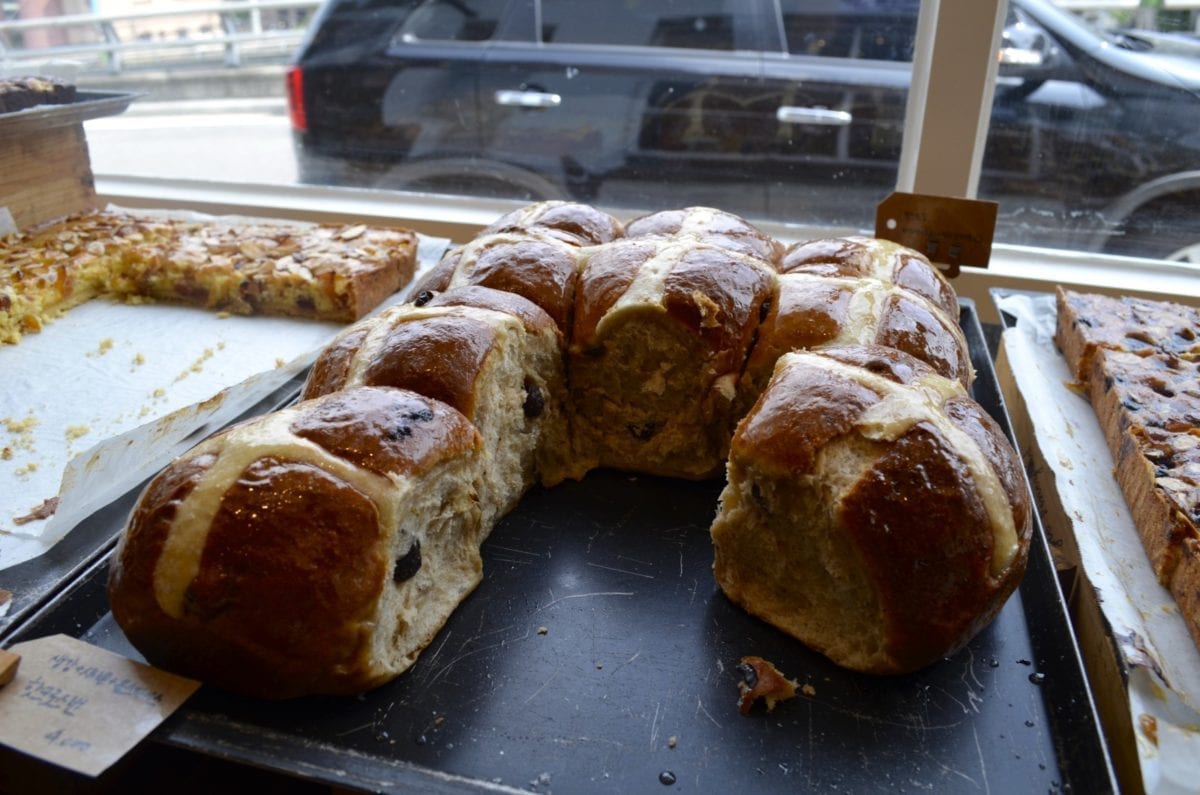
It Opens at 10 am, and frequently sells out on weekends.
Most popular items include chocolate brownie slabs, cranberry buns, and ginger snack cake.
Phone: 070-8801-1739
1MM Life Studio Cafe (어쟀거나 1MM) |서울시 종로구 부암동 269-8
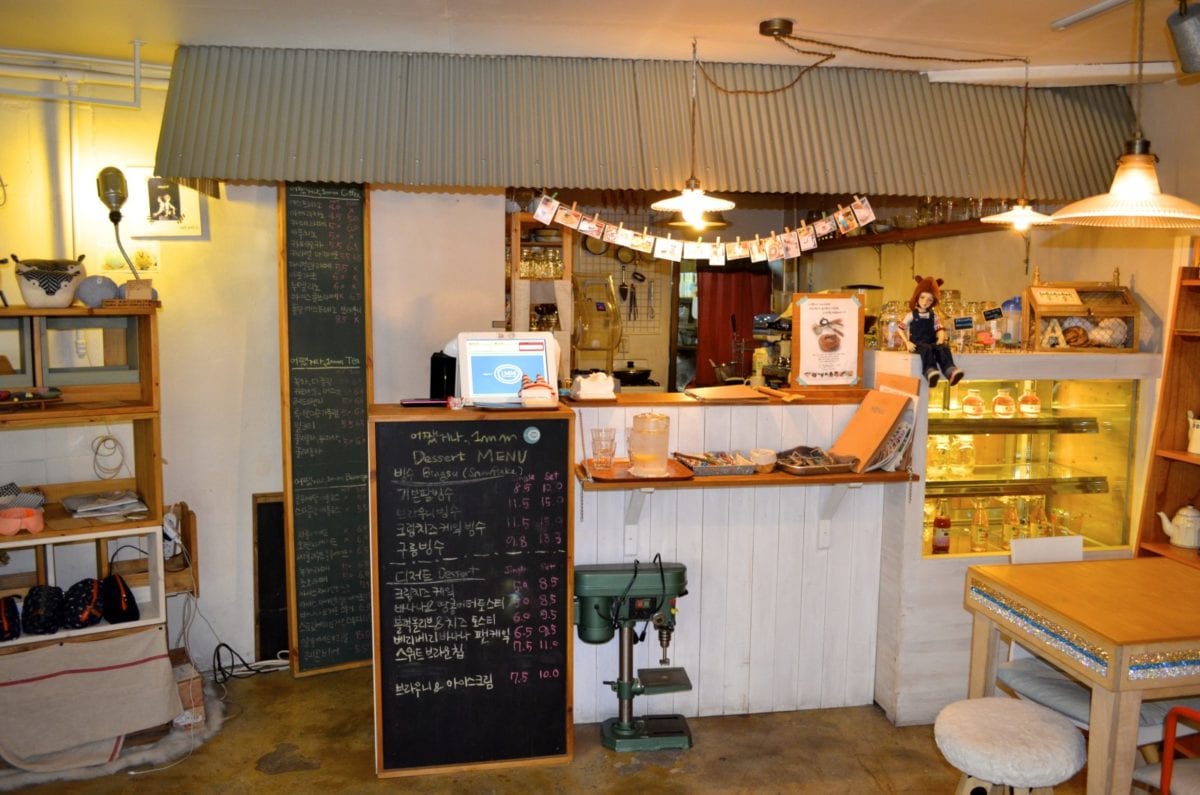
With one of the most unique cafe concepts in Korea, Anyway 1MM Cafe is where handicrafts and furniture design meet an excellent dessert and drinks menu.
Think towering, luscious milkshakes served in mason jars and creamy lattes in hand-made china sets. The extensive dessert menu is also made fresh each day by the nearby Seocho Baking Academy
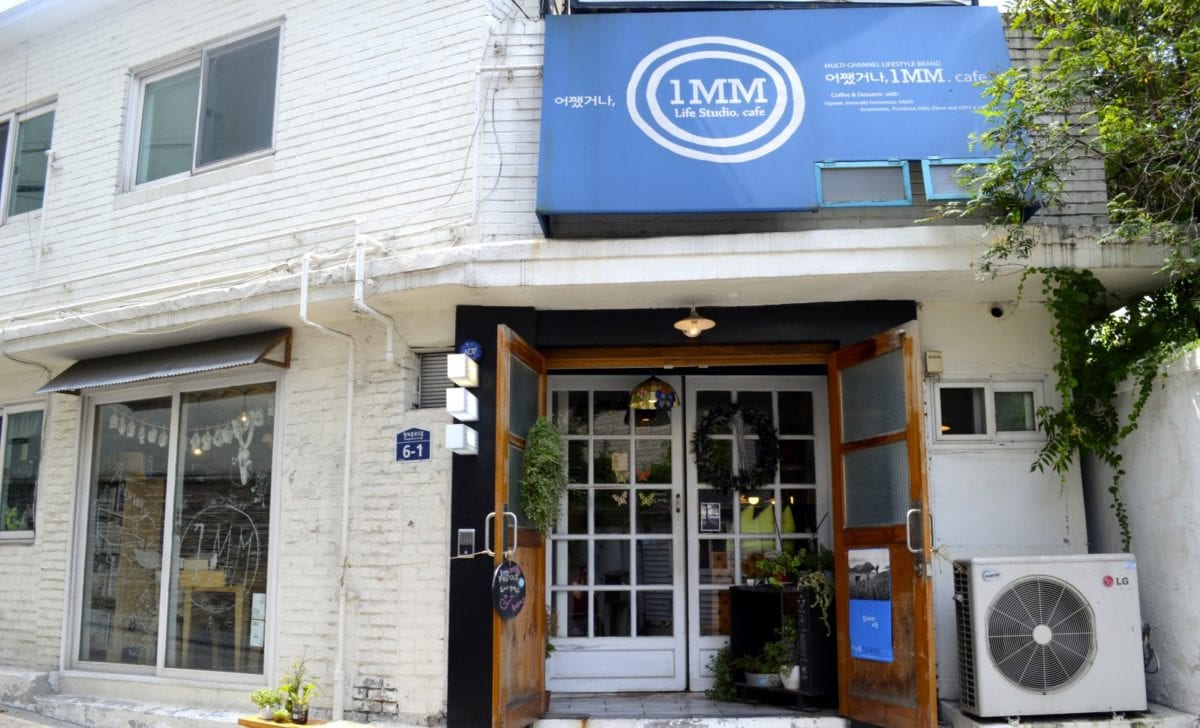
Founded by interior designer Park Seon Young, the first floor is a showcasing of his craftsmanship and cute lifestyle accessories like dolls, postcards, and stationery. Upstairs, you can look at more woodworking in their gallery or play with the cafe attendant’s little dog.
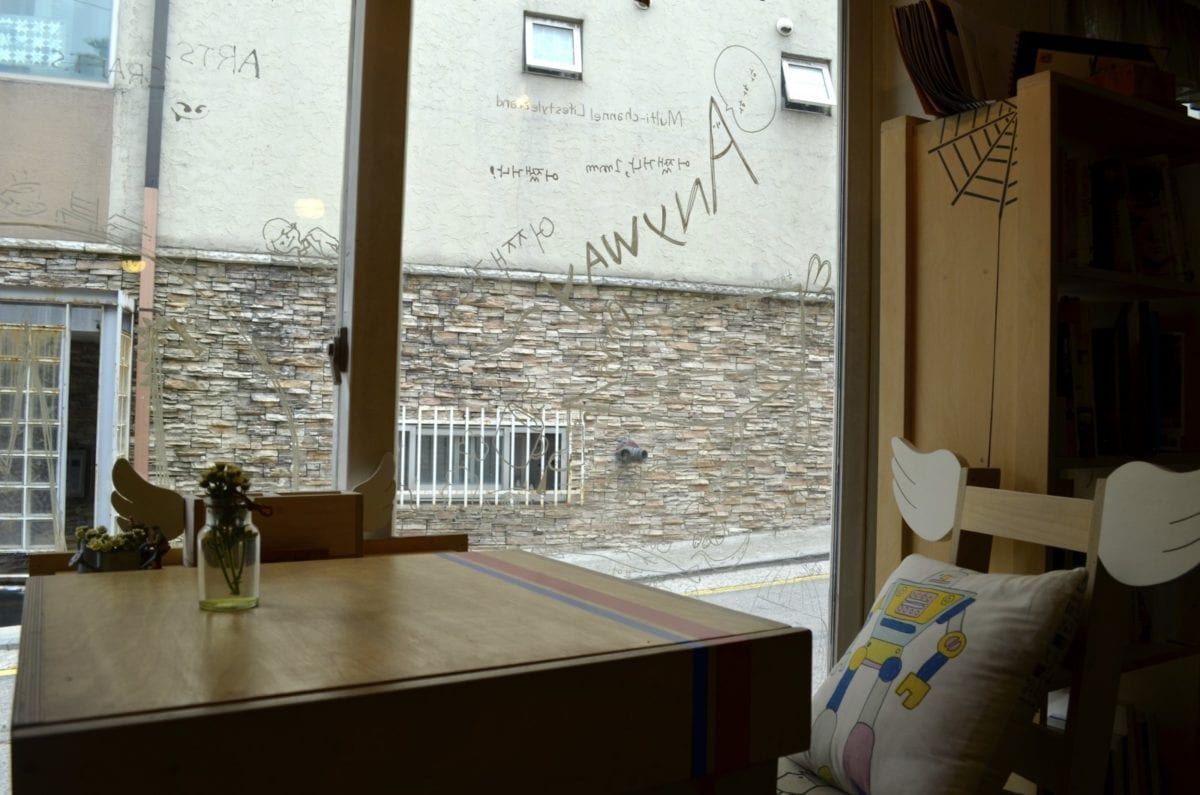
This cafe is on the same road as the Seoul museum, simply take a left instead of a right at the three-street intersection.
Phone: 02-395-3334
Phenomenal Coffees
Club Espresso | 132 창구의문로 종노구 서울
Founded in 1990, the intoxicating deliciousness and amazing quality of coffee at Club Espresso has drawn the business out of its small cottage to a two-story venue on the main strip of Buam dong.
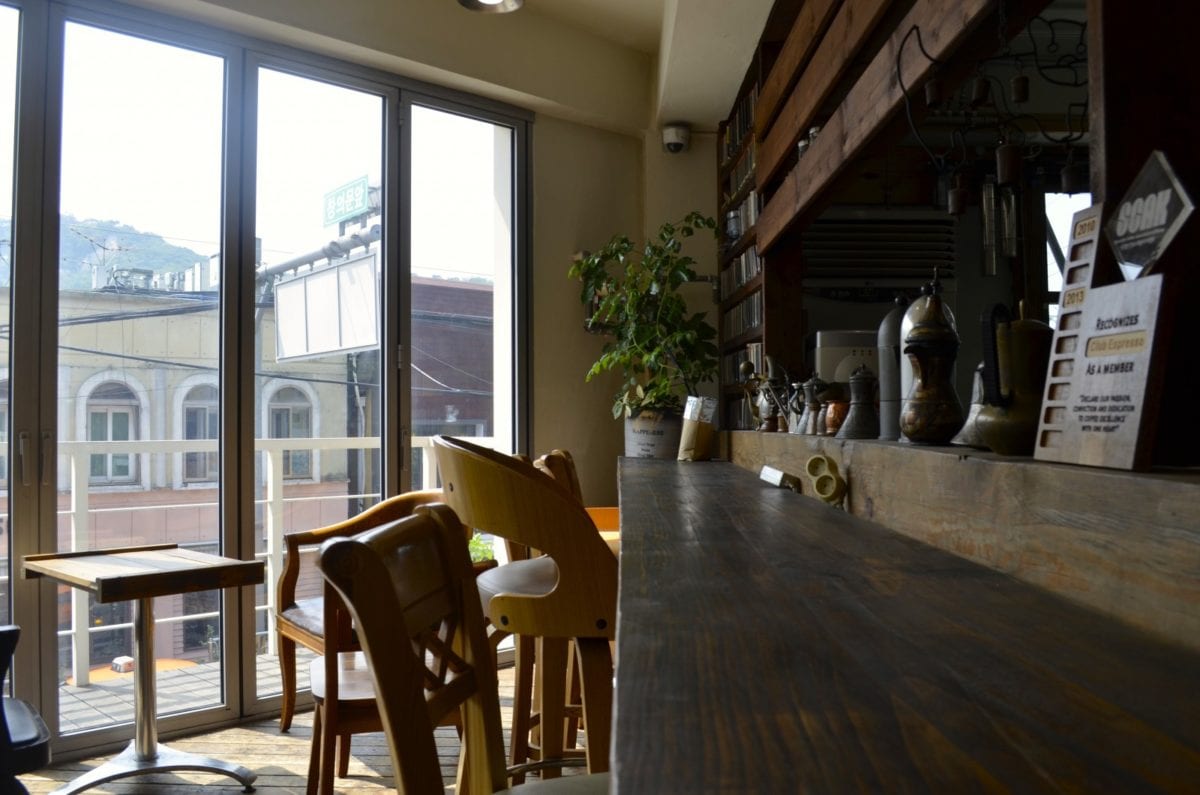
Here they roast their own beans; their specialty espresso extractions pack a mouthful of exquisite acidic flavor. While espresso is the name of the game here, they also offer delicious Korean-style drip coffee. The second story provides quaint views of the main street and an open-beam ceiling giving the seating area a charming, rustic feel. I found many couples and families enjoying fudgy affogato cups and americanos in the shaded section as well.
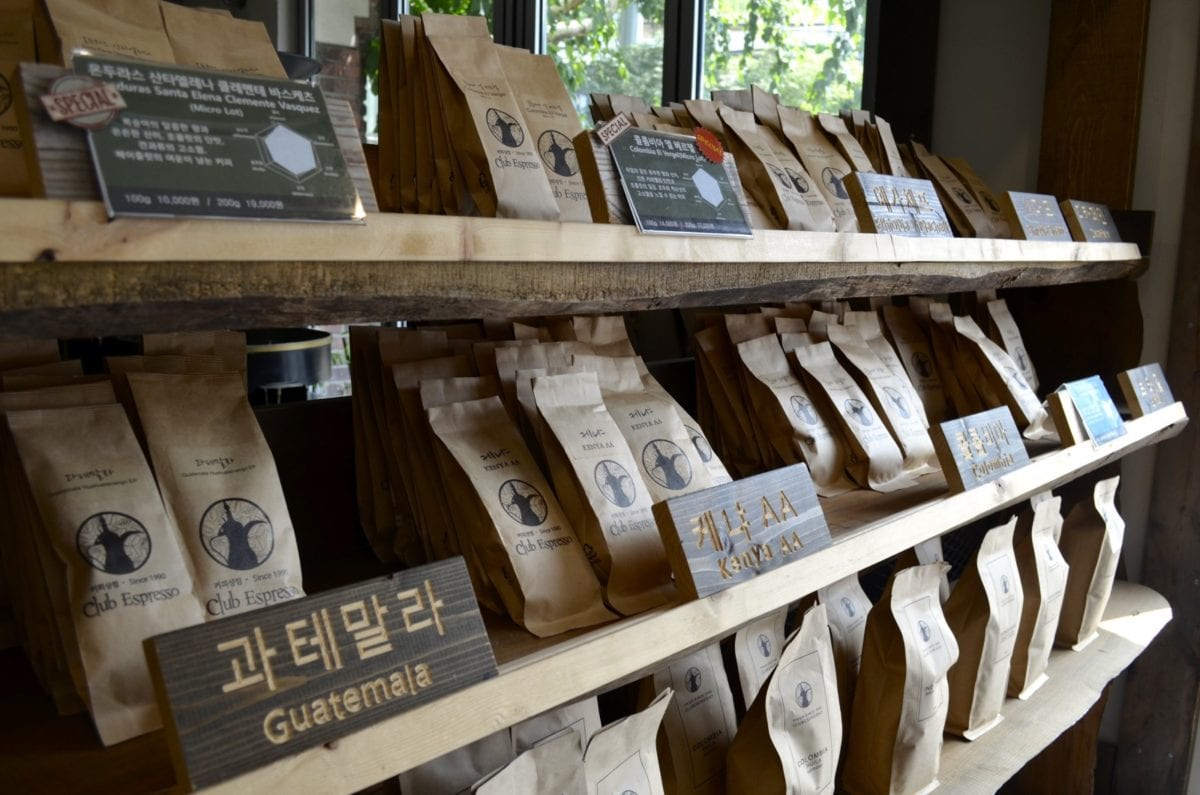
To place your order, choose between drip coffee, single-origin espresso, or an espresso variation drink. From there, each category has a selection of several beans sourced from Guatemala to Kenya.
You can also purchase beans from a variety of coffee paraphernalia like Italian-made stove-top espresso makers and mug accessories.
Phone: 02-764-8719
Coffee SomA | 종로구 부암동 279-1
Just down the road from SCOFF bakery, this coffee roasters and academy boast many African-sourced beans and does their extractions on-site as well.
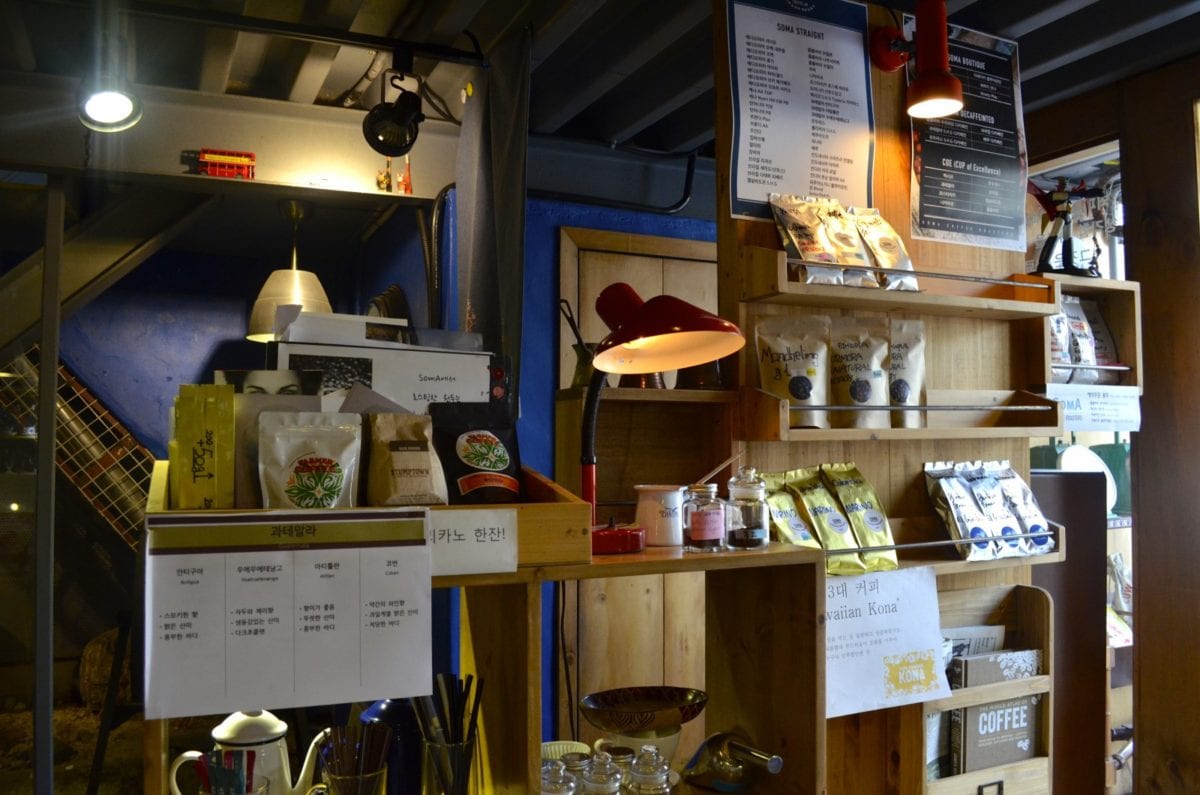
The specialty here is Dutch brew coffee, where cold water replaces hot water and steam to infuse the liquid with the grounds. It takes roughly 3-6 hours to brew a pot, but because of the absence of oxidation, the coffee is given a lighter, less-acidic flavor and more of a fruity aftertaste.
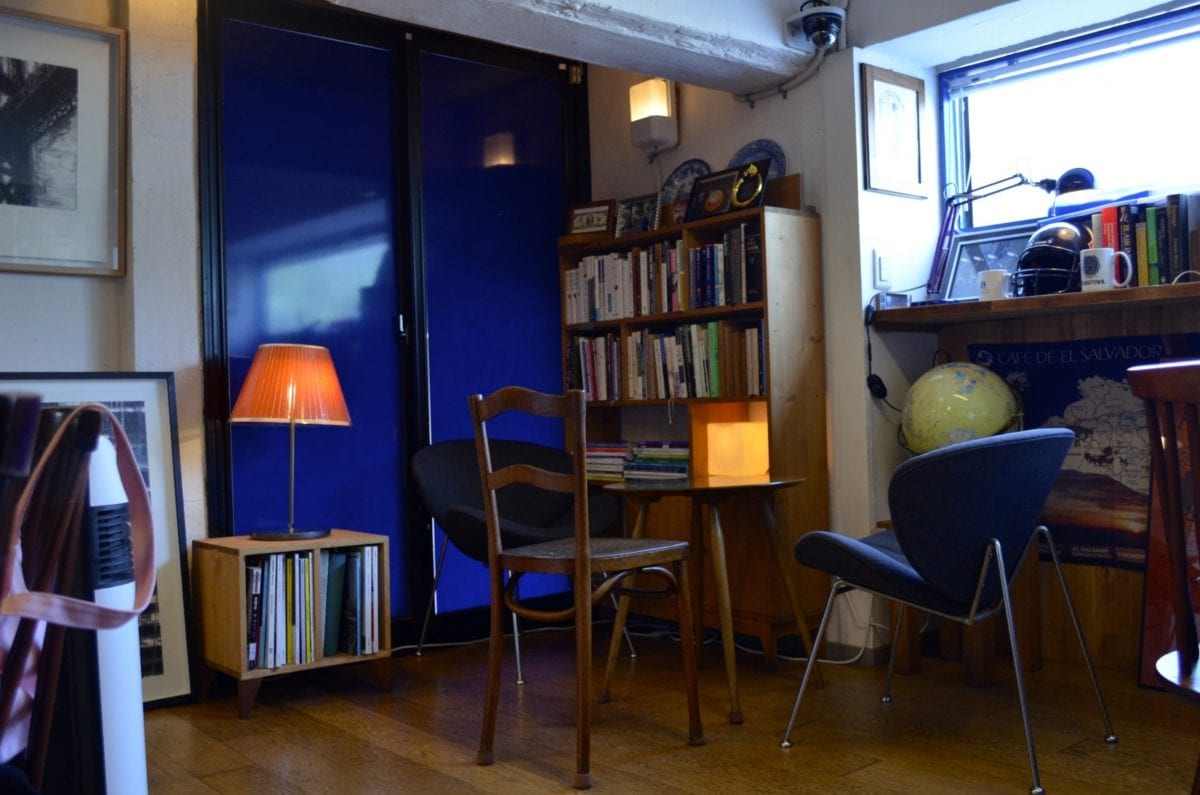
This cafe offers a very shady respite after hiking around Seokpajeong or a place to devour your baked goodies from SCOFF, the second floor is decorated with vintage toys, and bold blue walls making you feel as if you’ve snuck into the cozy attic playroom of a rather sophisticated 11-year old.
Panoramic Views
Sanmotoonge Cafe & Gallery (산모퉁이) | 97-5 종로구 부암동 서울

A 700m walk up the hill past Club Espresso, the Sanmottonge Cafe is not for the faint of heart but offers breath-taking views of the Inwang and Bugak mountains.
Follow Neungkumnamu road up past the Korea Campus Crusade for Christ and Art for Life Cafe.
The cafe itself is a gorgeously renovated brown-stone mansion, with an open patio garden, large picture windows, cozy wooden interiors, and a little rooftop terrace house to enjoy your cheesecake and coffee in.
The atmosphere is a remnant of a Swiss Chalet, only decorated with antique knickknacks and Coffee Prince souvenirs.
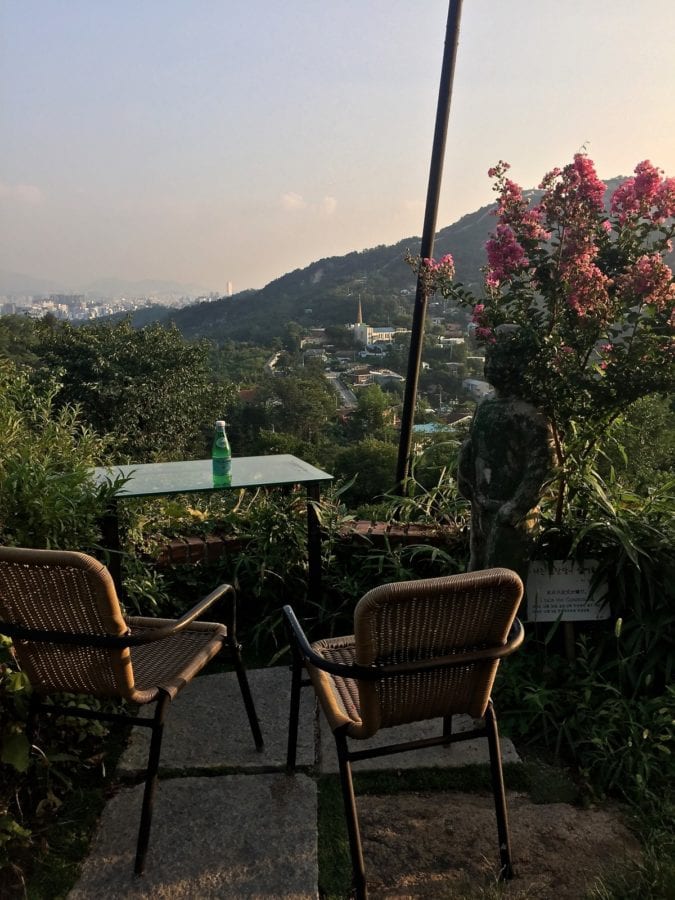 It is perhaps best well-known for being the filming site of an MBC Korean Drama “Coffee Prince”, you’ll notice lots of memorabilia, signed posters, and a signature vintage yellow Volkswagen around the cafe’s grounds.
It is perhaps best well-known for being the filming site of an MBC Korean Drama “Coffee Prince”, you’ll notice lots of memorabilia, signed posters, and a signature vintage yellow Volkswagen around the cafe’s grounds.
On the ground floor, you’ll find a Gallery and Fun Room filled with eccentric props used during the drama’s filming and a selfie station where you can try on Coffee Prince accessories and snap a photo in a wall-length mirror.
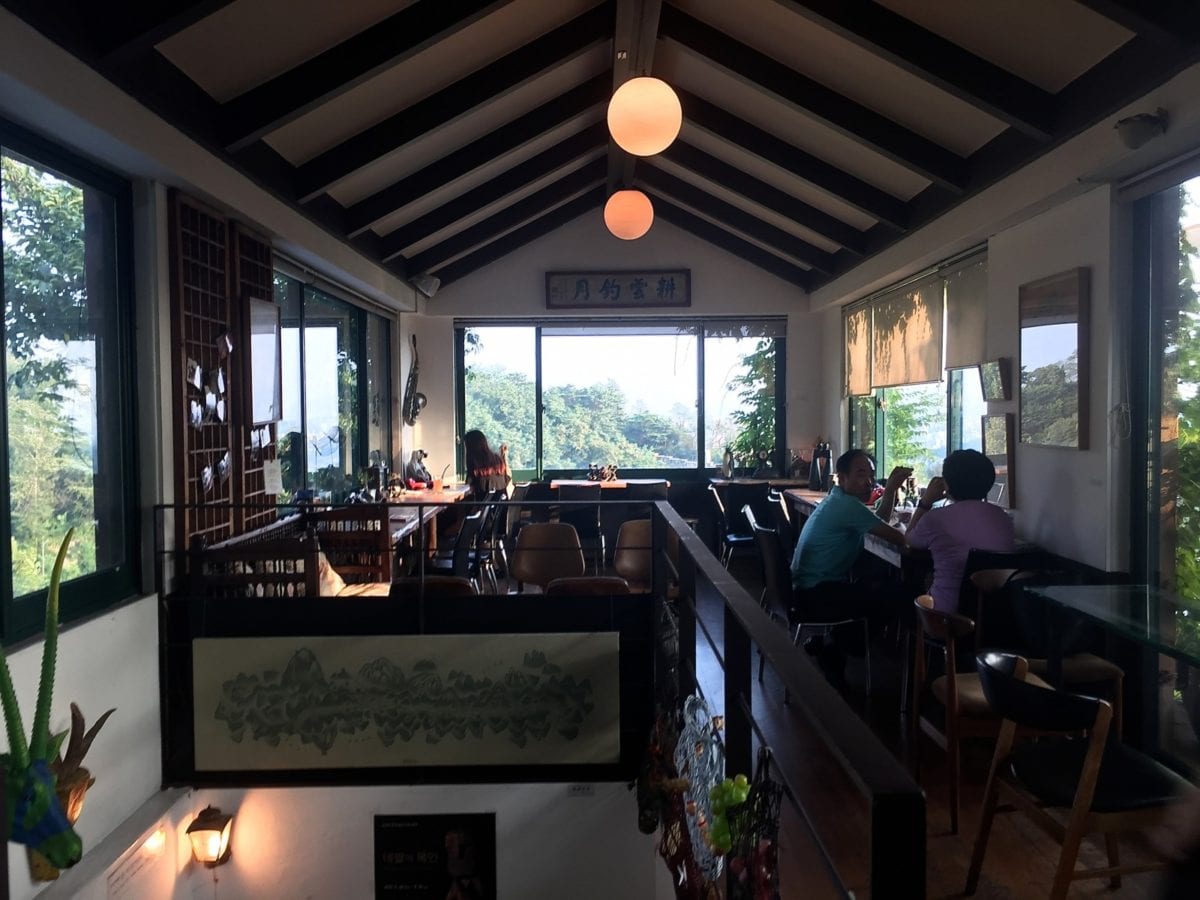 It’s not cheap at 8,000W a cup of coffee, but you’re paying to take a look around the gallery and the stunning views.
It’s not cheap at 8,000W a cup of coffee, but you’re paying to take a look around the gallery and the stunning views.
Hours: 11:00am-10:00pm
Phone: 02-391-4737
Zaha Museum (자하 미슬과) | 46, 창위문로 5가길 종노구. 서울
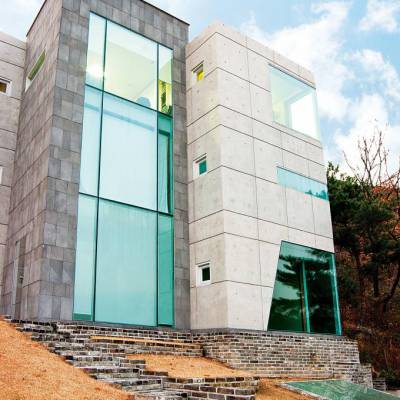
Proclaimed as “the highest art gallery in all of Korea”, this contemporary art gallery offers free admission to its spaces and a garden pavilion with spectacular views.
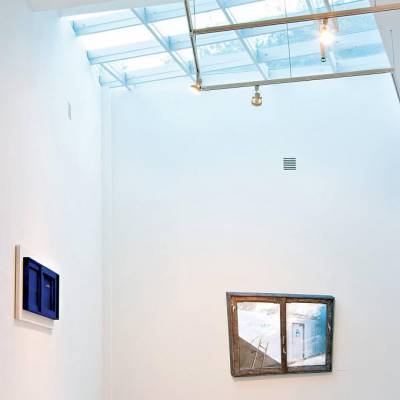
The Zaha Gallery was founded and funded by Korean entrepreneur Kang Jong Kwon who wanted to dedicate a space to showcasing experimental works from young Korean artists. Throughout the two stories of gallery space, you can view a fantastic variety of art from sculpture and oil painting to woven cloth and collage.
In addition to accommodating a range of mediums, the gallery also hosts competitions and educational programs for creatives.
Address: 46, Changuimun-ro 5ga-gil, Jongno-gu, Seoul
Phone: 82-2-395-3222
Hours: 10:00-18:00
Palgakjeong (팔각정) | 산 6-17 평창동 종노구 서울
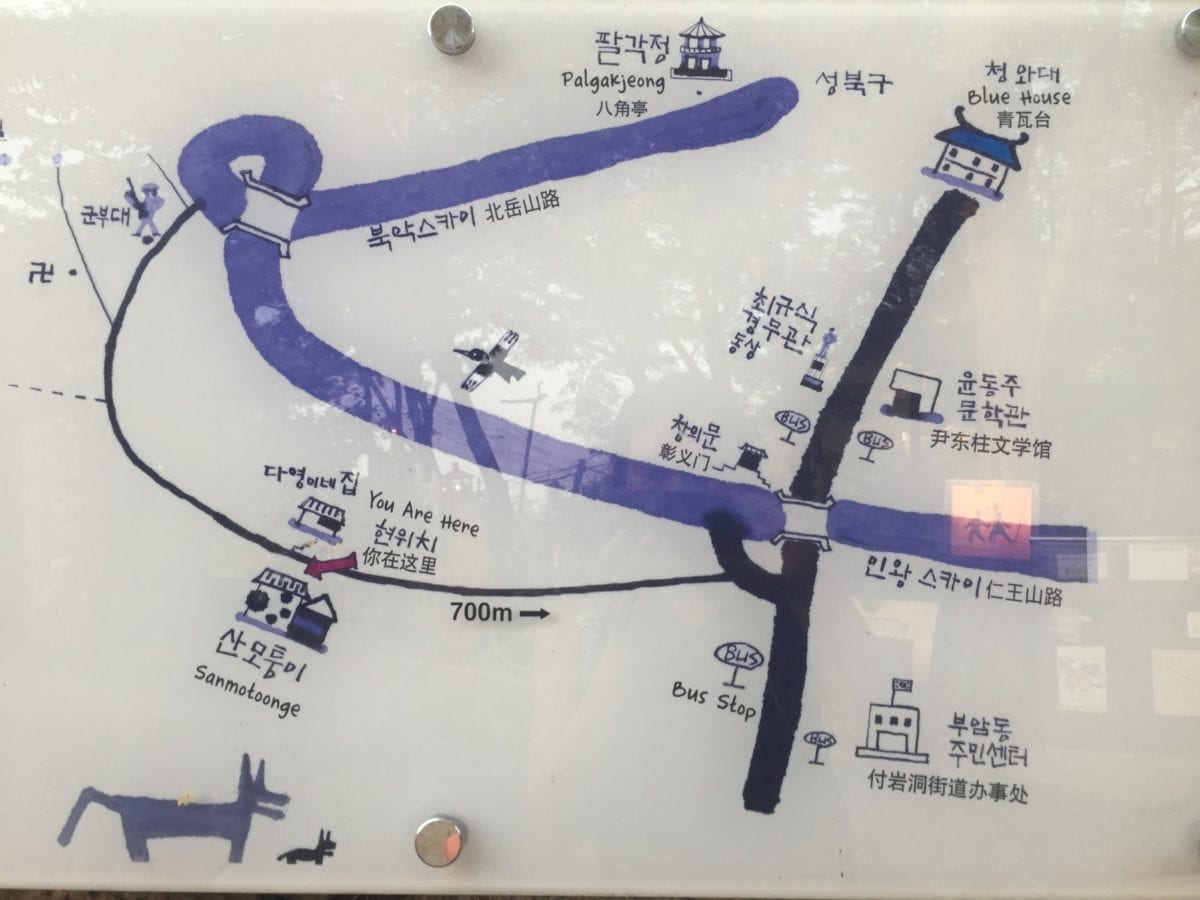
Palgakjeong is located at an elevation of 342 m, where visitors can enjoy not only a beautiful fusion of traditional and modern architecture but also 360 views of the city and surrounding natural environment. plaza, a pagoda resting area, a wildflower garden, and walking trails.”
The park has been reopened by the Seoul Metropolitan Government to include a plaza, a pagoda resting area, a wildflower garden, and walking trails.

This beautiful eight-cornered pavilion is famous for being the site where rebel Korean activists gathered to declare independence from Japan at the height of the March 1st Movement of 1919. It was here where their declaration was first publicly read, spurring military action and arrests by the Japanese colonial government.
Palgakjeong Pavilion was built in 1902 during the 6th year of the reign of King Gojong. Construction and oversight were done by royal architect Sim Uiseok, who was considered a master of harmonizing both traditional and modern architectures.
Curious Shops
Jeo Jib (저집) | 서울특별시 종로구 창의문로 142-1
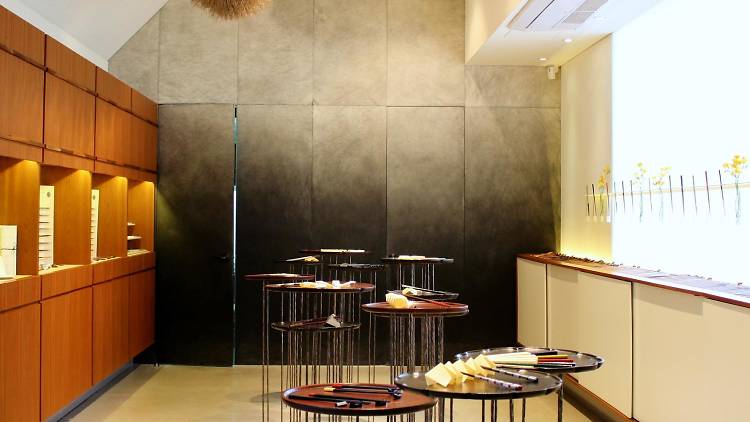
Housed in a sleek, modern-style studio a few paces away from the bus stop, Jeojip is as much a chopstick store as it is a gallery. It takes about 30 joints and 50 muscles to maneuver a pair of chopsticks, and Jeo Jib considered each one while designing their balanced, mother-of-pearl inlay chopsticks.

This is a perfect place to pick up a quality gift from Korea for a friend back home; their rose-tinted, lacquered utensils have been featured everywhere from the Milano World Expo to the glossy pages of Chinese fashion magazines for their outstanding design.
Chopsticks start from 55,000W to 200,000W for a single pair.

If the price is too steep, however, feel free to simply take a look around the studio. The gallery has won a Grand Prize from the ROK’s Space Design Award Association for its effective and aesthetic way of showcasing its products.
Phone: 02-3417-0119
Alice’s Teapot (앨리스의 티팟 ) |서울 종로구 자하문로 236
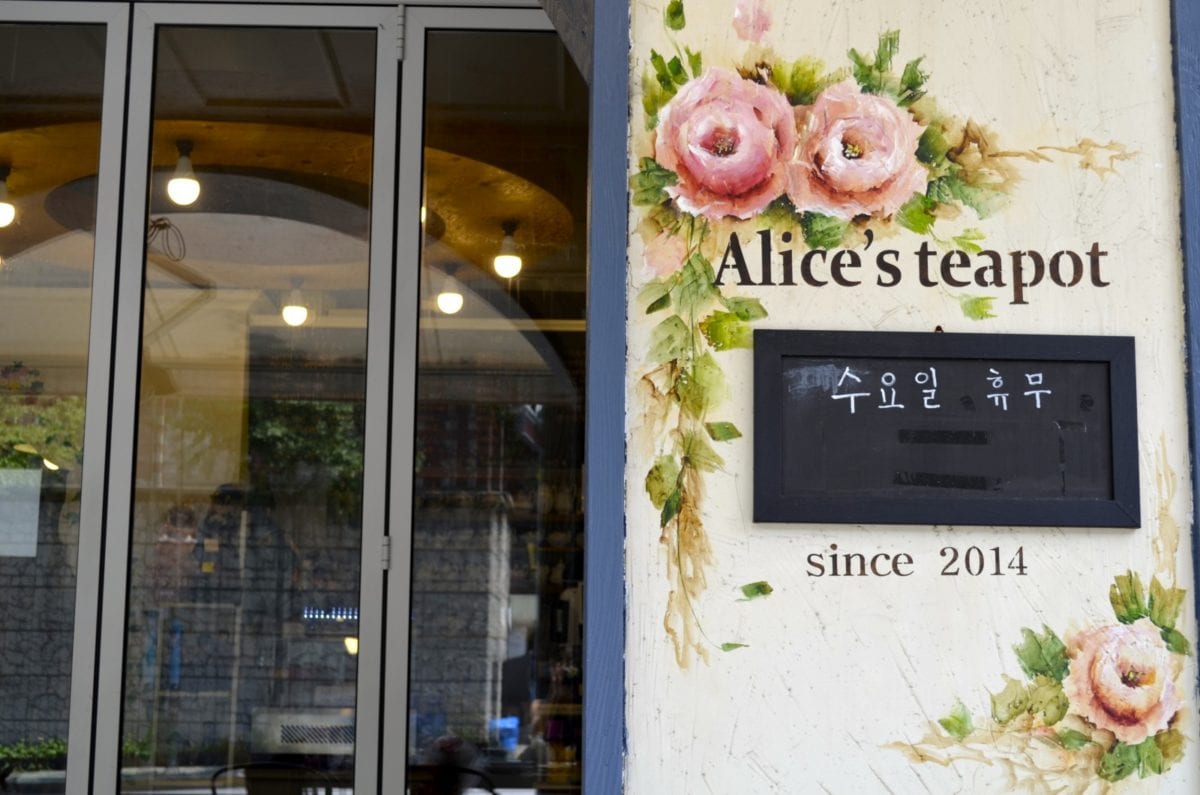
Located across the road from the Seoul Museum, Alice’s Teapot is a local hotspot for women for their very affordable afternoon tea sets. The cafe decor consists of many Sancho dolls peering out from the shelves and hand-painted floral wall murals.
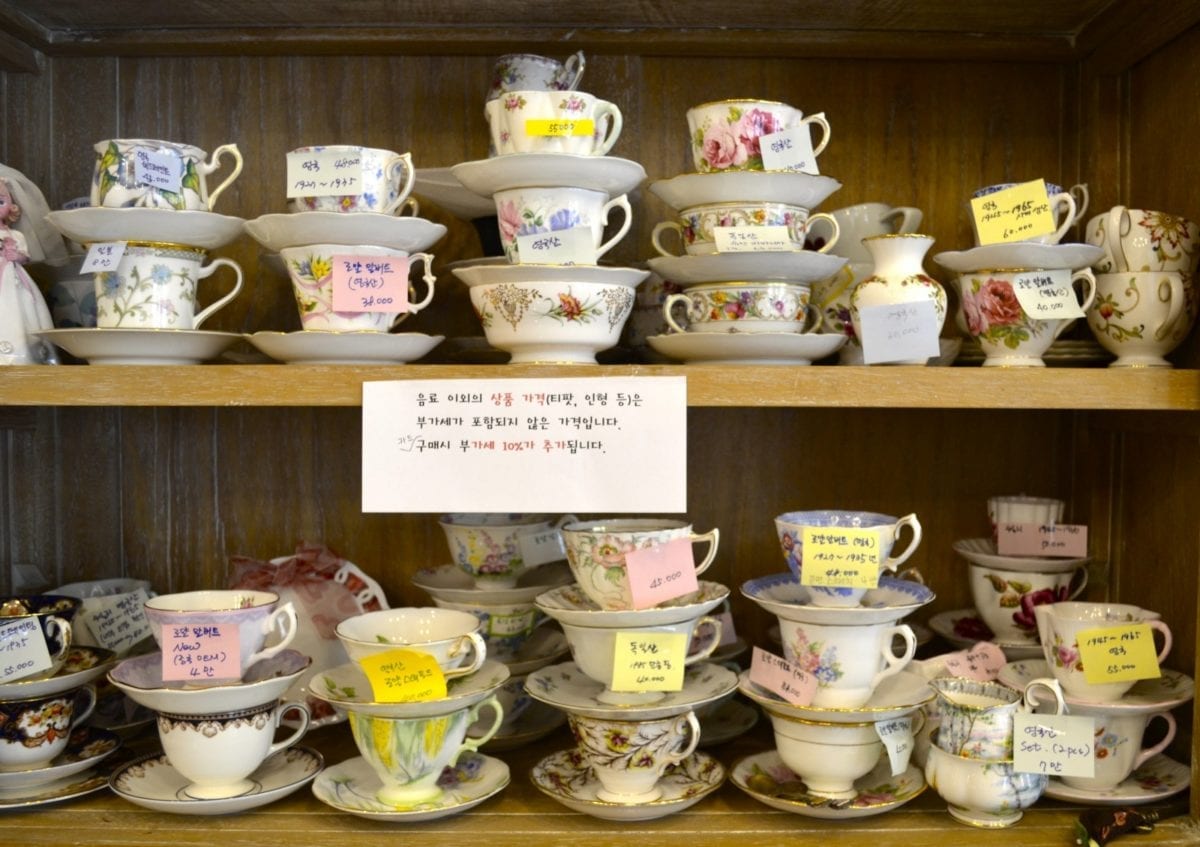
Here you can find a variety of tea cups, pots, and accessories to purchase or sit down for a cuppa. An impressive selection of Versailles Rose to Juba ttempeu will run about 6500-7500W for a hot teapot.
Afternoon tea sets of homemade pastries such as macarons, scones, and homemade yogurt are 10,000W for a three-tiered set.
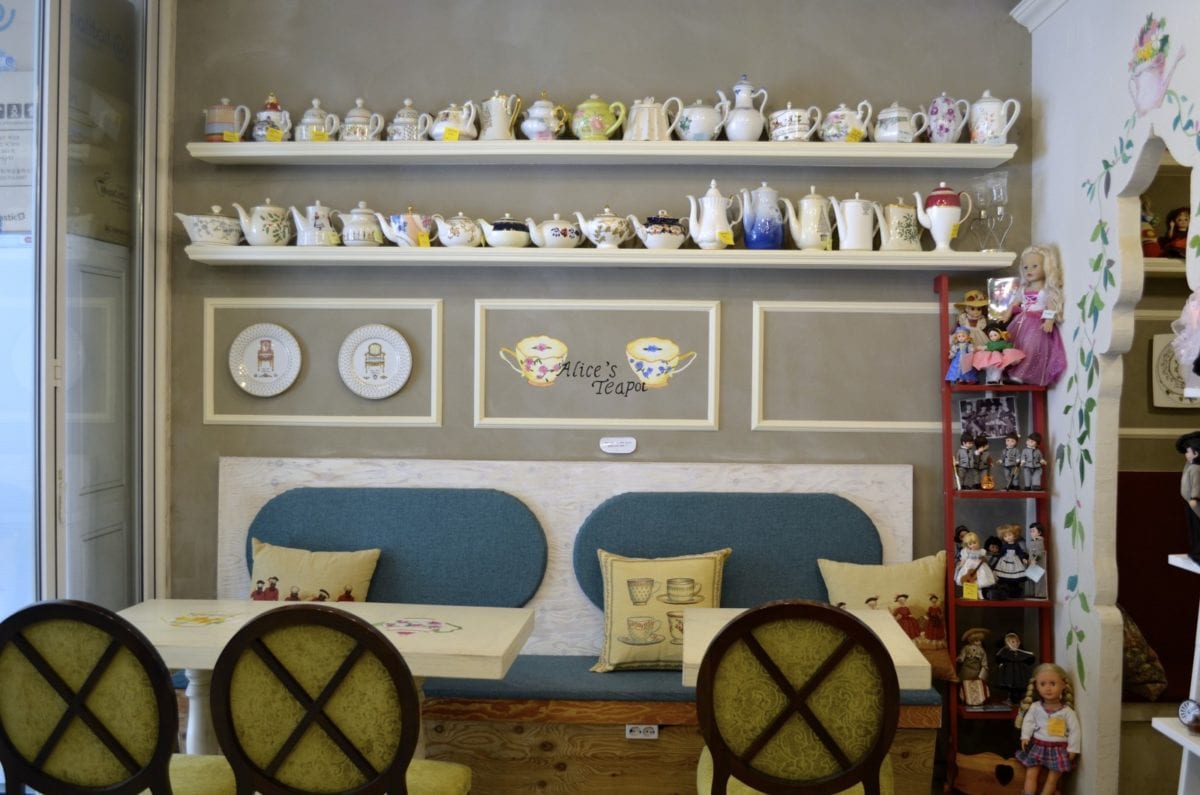
The menu is only in Korean, so ready your Hangeul skills or ready your tea order beforehand!
” nok cha hanna gae jusayo” – I would like a cup of green tea.
Phone: 02-395-7755
Infiorata (인피오라타) | 110-817 서울시 종로구 부암딩 254-1
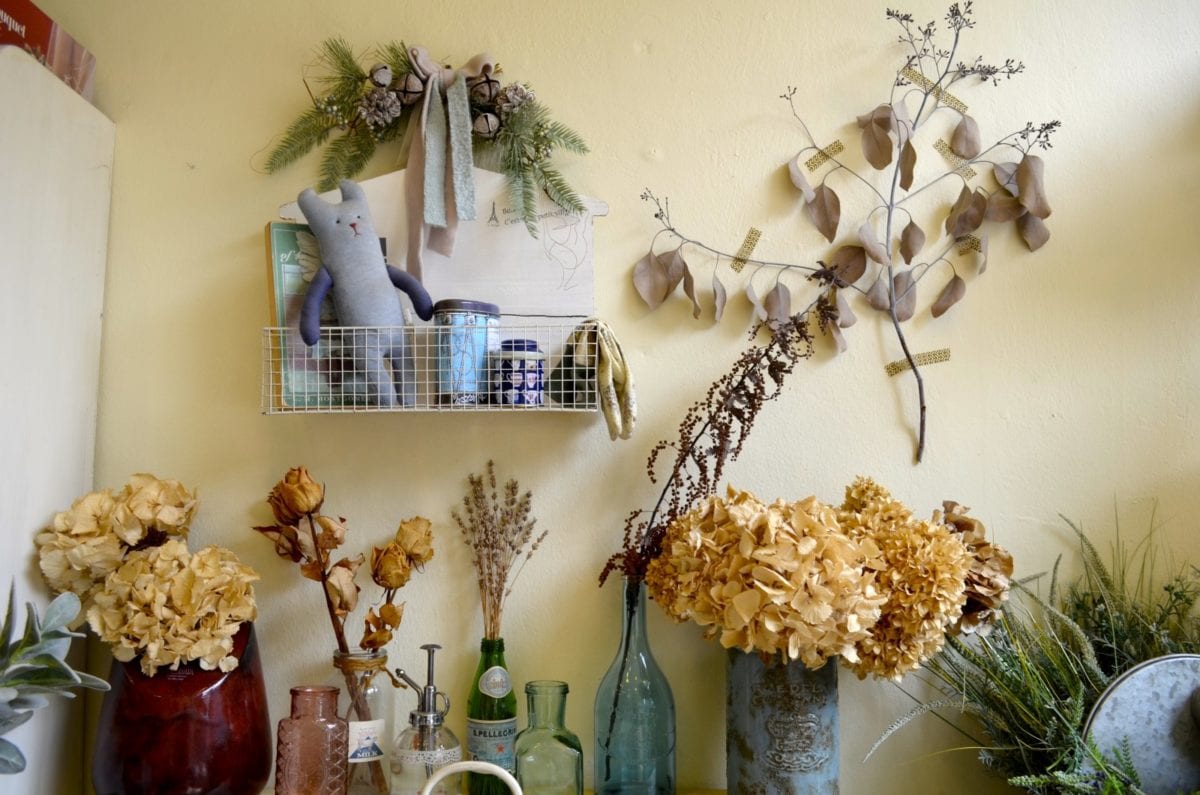
A classic Korean flower shop, Infiorata balances beauty and tranquility by accessorizing its flower bouquets with girlish ribbon and brown paper wrappings.
The storefront features a beautiful presentation of warm-tone sample bunches and stuffed animals that are sure to draw you in.
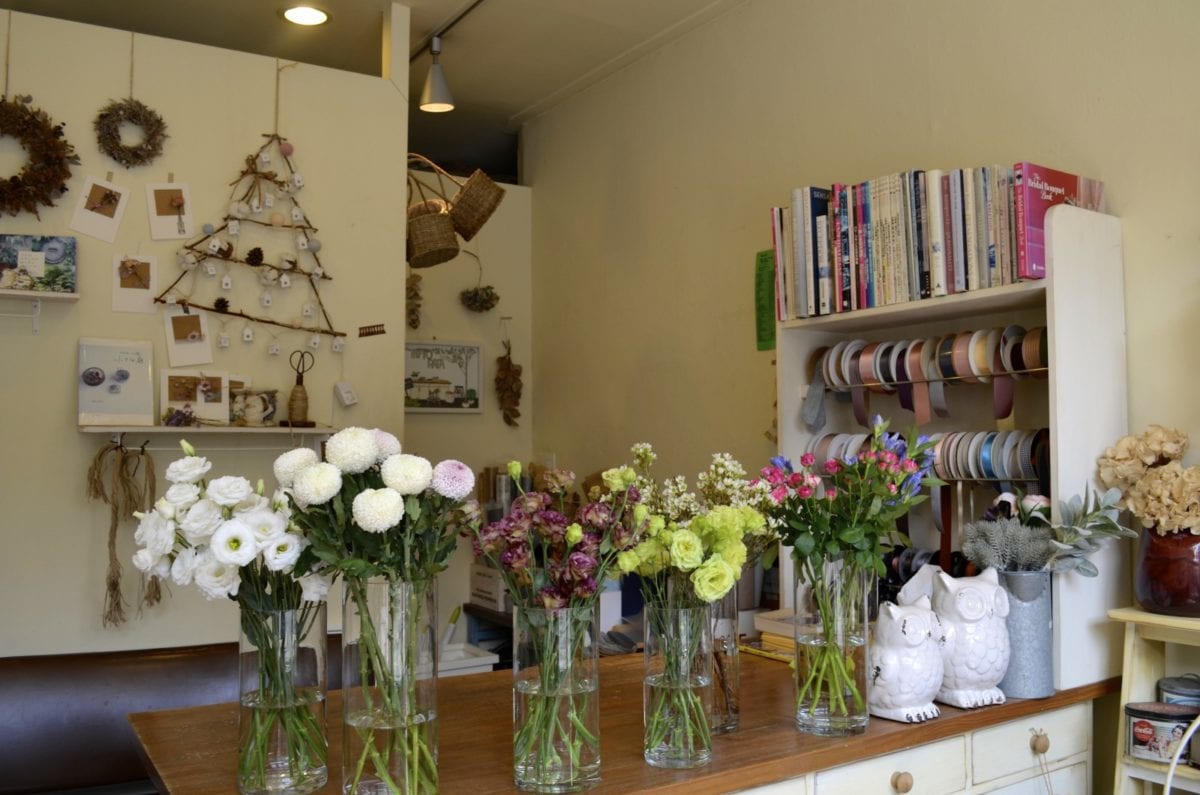 The shop, run by two women, sells a wide variety of cacti to chrysanthemums. Perennial houseplants and even silk flowers can even be bought as an inexpensive and thoughtful long-term gift.
The shop, run by two women, sells a wide variety of cacti to chrysanthemums. Perennial houseplants and even silk flowers can even be bought as an inexpensive and thoughtful long-term gift.
The plants are impeccably paired with a matching ceramic pot to enhance the blooms and carefully packaged so as to protect the plant during transportation.
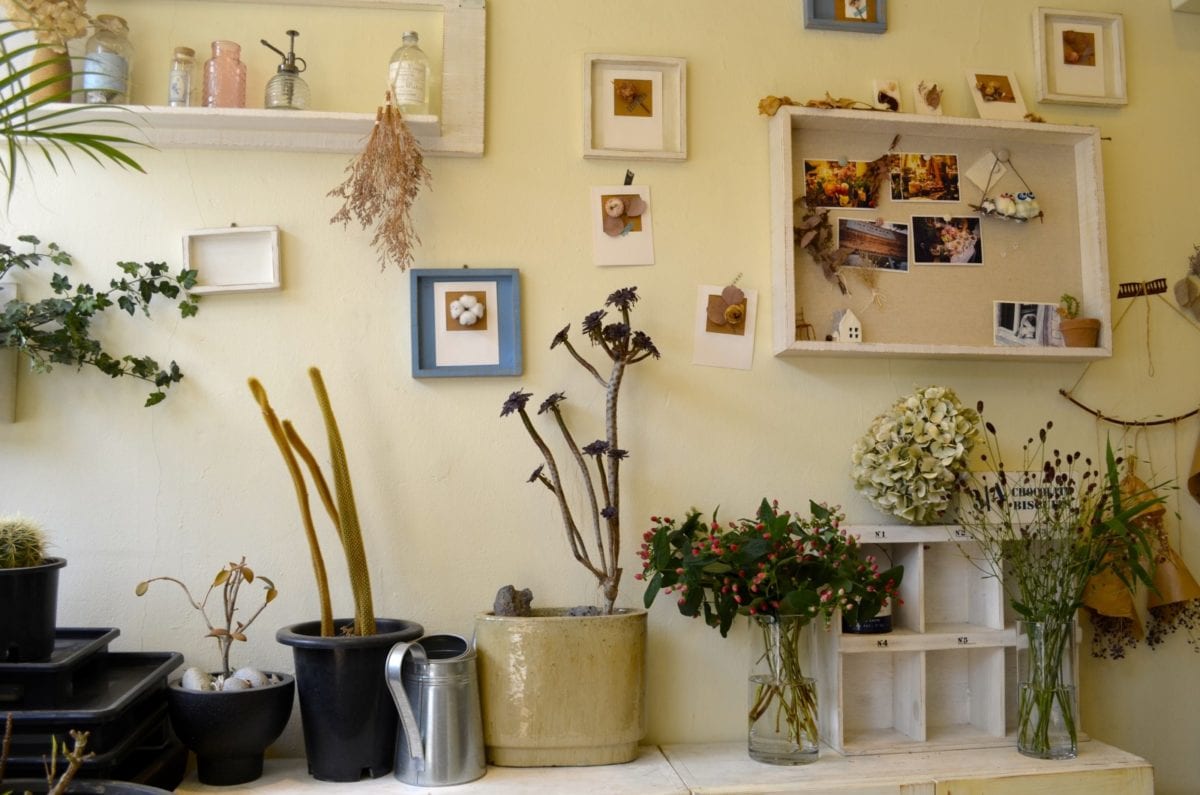
For arrangement classes or prebookings click here.
Phone: 02-2051-5463
Did you have more recommendations? Leave a comment below! You can also check out some Unique Things To Do In Seoul.



